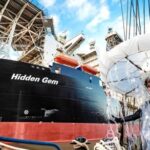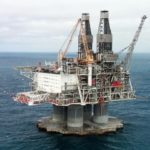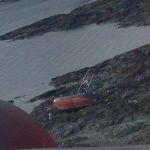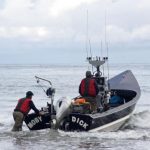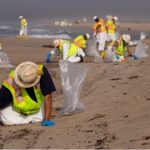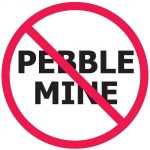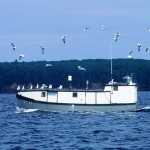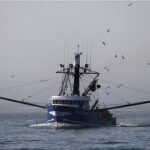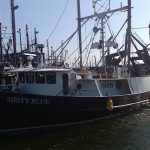Search Results for: plankton
International overfishing study argues every fishing vessel should be tracked
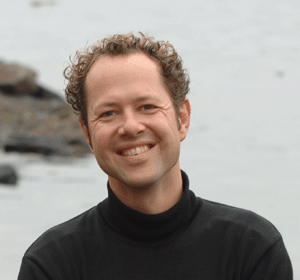 A team of international ocean scientists is urging policy makers around the world to start tracking every vessel on the planet — the same way ride-hailing service Uber tracks cars. A report released today in the journal Science says the anonymity granted to vessels at sea creates perfect conditions for overfishing and the destruction of entire ocean ecosystems. Boris Worm, a Dalhousie University ecologist and a senior author of the report, said the key may be a satellite tracking system known as AIS, or automatic identification system. Read the rest here 09:27
A team of international ocean scientists is urging policy makers around the world to start tracking every vessel on the planet — the same way ride-hailing service Uber tracks cars. A report released today in the journal Science says the anonymity granted to vessels at sea creates perfect conditions for overfishing and the destruction of entire ocean ecosystems. Boris Worm, a Dalhousie University ecologist and a senior author of the report, said the key may be a satellite tracking system known as AIS, or automatic identification system. Read the rest here 09:27
Are you getting the idea that if you’re a fisherman Daniel Pauly isn’t on your side?
FishNet-USA/February 22, 2016
Nils E. Stolpe
“… The crisis in the world’s fisheries is less about scientific proof than about attitude and political will. And the world’s fish need a dynamic, high-profile political champion like a Bono or Mandela to give finned creatures the public profile of cute and furry ones.” (Daniel Pauly in Hooked on fishing, and we’re heading for the bottom, says scientist, a 02/17/06 press release by the Natural Sciences an d Engineering Research Council
d Engineering Research Council
This quote by the Pew Charitable Trusts’ premier fisheries researcher says just about all that needs to be said about the ongoing anti-fishing campaign that they have been financing, along with a handful of other mega-foundations, to convince anyone who is willing to listen that, in spite of a dearth of compelling scientific evidence supporting this strum und drang , the world’s oceans are – and have been – facing a crisis brought about because of the depredations of commercial fishermen.
Where are the Kardashian’s when Pauly really needs them?
Just imagine a scientist, any scientist, willing to publicly discount scientific proof and instead embrace the cachet of celebrity to sell his message of doom and gloom in the oceans. And then imagine multi-billion dollar “charitable” foundations eager to support him in these efforts, all in the face of rigorous opposition from well-established scientists who dismiss this rabble rousing for what it is; full of sound and fury but signifying not very much at all.
To help in putting his most recent round of pronouncements on how bad fishing is supposed to be in the proper perspective, I’ve highlighted – because “lowlighted” isn’t yet an accepted term, but there’s always hope – a number of his sky is falling predictions that I’d consider on a par with his “we don’t need sound science, we need high profile personages” plea up above.
The attack of the mud trails!
Back in 2007 Pauly and another researcher generated an inordinate amount of publicity by releasing some satellite images of “mud trails” caused by shrimp trawlers fishing over the Yangtze River delta off China’s coast. Said Pauly of these images “think of the story about China’s Great Wall being the only human artefacts visible from space. Now we can add the mudtrails of trawlers. But not only trawlers from China – from all over the world.” Note that in 2007 Google Earth had been available for several years. Contrary to Pauly’s contention, Google Earth made available via satellite imagery many millions of “human artefacts,” including the four skylights on my house and the patio furniture on the patio. But we wouldn’t want anything like accuracy interfering with a good story, would we?
Pauly’s mud trails (identified only as “satellite photo”), a portion of the Great Wall of China and Casa Stolpe (both from Google Earth)
As far as Pauly’s supposed damage by these mud trails, ten minutes of “research” with Google revealed that the Yangtze River delta contains 500 billion tons of sediment that ranges from three to one hundred and thirty feet deep. Obviously any critters living over or in this sediment are evolutionarily equipped to handle suspended – or resuspended – sediment, and the little bit extra that is kicked up by trawlers isn’t going to amount to a tinker’s damn to any of them. But then again, how effective would this level of crisis mongering be if it was constrained by reality?
And we can’t forget Pauly’s theory of ugly fish
In his article Aquacalypse Now (New Republic, 09/28/09) Pauly wrote that when the oceans had been stripped of the larger, more visually appealing fish, “boats began to catch fish that were smaller and uglier.” While, given any familiarity with the history of seafood consumption at all, I couldn’t imagine his “Bono” or “Mandela” buying into this one, it appears as if nothing like reality is going to stand in the way of a tale Pauly is set on telling. Picture sea cucumbers, oysters, monkfish, sardines, whitebait, eels, lobsters, clams, crabs, palolo worms, geoducks, etc. All of these, and many other small or “ugly” fish and shellfish have been consumed by hungry humans for generations, and I doubt that anyone – other than Daniel Pauly and his associates – have ever decided not to eat any of them because they’re too small or not pretty enough.
Fishing down the food chain? Fishing up the food chain? How about fishing it sideways?
In 1998 Pauly made his notorious, and probably his most controversial, pronouncement of imminent ocean doom due to fishing. To wit, fishermen had caught too many of the top predators in the world’s oceans and as a consequence were catching fish and shellfish lower down on the food chain, and that without more controls on fishermen we were destined to a future with oceans inhabited by nothing but jellyfish and plankton. In Issues For Debate in Environmental Management he is quoted “we are eating bait and moving on to plankton and jellyfish…. My kids will tell their children “’eat your jellyfish.’” The truth of the matter is that if his children lived in Japan or China or in a bunch of other places in Asia they might be telling their kids to “eat your jellyfish” at this very moment.
Needless to say, Pauly is once again attempting to make the commonplace a harbinger of his supposed imminent “oceans crisis.” In fact, dried jellyfish have been a staple of Asian cuisines for millennia. According to Jellyfish fisheries in Southeast Asia by M. Omori and E. Nakano (Hydrobiologia 451: 19-26, 2001) “a few large jellyfish in the order Rhizostemeae constitute an important food in Chinese cooking. For more than 1700 years they have been exploited along the coasts of China.” This would appear to make Pauly’s belief in the evils of modern fishing based on jellyfish consumption somewhat untenable. It’s highly unlikely that commercial fishermen – or whatever they might have been called back in 200 Anno Domini or thereabouts – had fished down their food chain, so that sort of leaves out jellyfish consumption as an indicator of much of anything other than a desire to eat jellyfish. But it appears as if something as ancient and as culturally acceptable as eating jellyfish can be distorted to reinforce his crisis mongering, he’s going to use it.
(see Ray Hilborn’s Myths – Fishing down food webs at https://rayhblog.wordpress.com/myths/.)
Shifting baselines?
In 1995 Pauly wrote “each generation of fisheries scientists accepts as a baseline the stock size and species composition that occurred at the beginning of their careers, and uses this to evaluate changes. When the next generation starts its career, the stocks have further declined, but it is the stocks at that time that serve as a new baseline. The result obviously is a gradual shift of the baseline, a gradual accommodation of the creeping disappearance of resource species, and inappropriate reference points for evaluating economic losses resulting from overfishing, or for identifying targets for rehabilitation measures.” (Anecdotes and the shifting baseline syndrome of fisheries, Postscript in TREE vol 10, no. 10, October 1995.)
It appears that – at least at the time and perhaps still – he believed that fisheries scientists arrived on the scientific scene in discrete generations, once every 25 years (that’s what a human generation is generally accepted to be), to replace the previous generation, and that the new generation discounted everything that the previous generation observed and recorded. As compelling as others of his fables are, on the face of it this seems to make sense. But does it really?
I strongly suspect that if you visit a college/university fisheries department (perhaps the University of British Columbia’s) or a government research facility (perhaps the NOAA/NMFS Northeast Fisheries Science Center in Woods Hole, MA) you won’t find a staff of scientists of similar or identical age, none younger and none older. I sure haven’t. You’ll find scientists and technicians beginning their careers, ending them, and at every stage in between. And those scientists and technicians don’t start from some particular point in amassing new data and coming up with new theories. In spite of Pauly’s contention – because it makes his indictment of modern fisheries science and modern fisheries scientists seem more believable – they base their work on what’s been done before. For example, the bottom trawl surveys performed annually by the Northeast Fisheries Science Center in Woods Hole, MA go back to 1950, spanning most of three generations. But, in spite of Pauly’s contention,, they were certainly not performed and analyzed by three separate and distinct cohorts of scientists and technicians who paid no attention to the survey results obtained prior to when their “generation” took over. The results of these surveys provide the foundation for the assessments of many of the species in our northeast region. Among other things, science – at least science as performed by most scientists but perhaps not by Pauly and his “generation” at UBC – is a continuous process, scientists building on, adding to or subtracting from the work of their predecessors.
But Pauly’s shifting baselines construct demands that this not be the case, so like all of us who at some point in childhood believed that by wishing we could bring Tinker Bell back from wherever fairies went to after exiting Wonderland, he apparently believes – or wants us to believe – that reality actually mirrors the world he has imagined to support his pronouncements.
And as far as his “creeping disappearance of resource species” is concerned, I have yet to learn of any species that has been driven into oblivion by fishing. By creeping development, damming of rivers, habitat degradation and pollution? Yup, but by fishing? The only reasonable response to that would be “show me.” Of course it could be argued that because of fishing the populations of all targeted species are reduced. That’s axiomatic – fishing kills fish. But to refer to that as “creeping disappearance” is just more of the same old same old.
There are, however and unfortunately, some actual, real-life shifting baselines that have nothing to do with fishing that do have a significant impact on finfish and shellfish resources. Primary among them would be those involving the quality of inshore and offshore waters and habitat. Think disappearing wetlands, think household chemicals pollution, think oceans permeated with plastics, think the continuing mass migration of us humans to the coasts. In any instances that are characterized by not enough fish, that lack of fish is far more likely to be a result of these real shifting baselines that it is of too much fishing.
This brings us to Pauly’s most recent exercise in his “blame it all on fishing” campaign
In a short paper in Nature Communications titled Catch reconstructions reveal that global marine fisheries catches are higher than reported and declining Pauly and co-author Dirk Zellar conclude that the world’s fisheries are in even worse shape than had been previously thought because, for a number of plausible seeming reasons, the Food and Agriculture Organization of the United Nations (FAO) has been under-estimating the world’s fish/seafood catch to an increasing degree for the last 30 or so years.
The primary problem with the approach that they used in their analysis is that the harvest of a particular fish stock often has nothing to do with the health of that stock.
As the following graphs show, the only discernable relationship between the monkfish (also known as lotte, one of Dr. Pauley’s so-called “ugly” fish that in spite of his theory to the otherwise has been a staple of Asian and European cuisine for generations) harvest and the monkfish total stock biomass is a fairly dramatic and pronounced inverse one.
I looked at the data for a few other U.S. fisheries and in some the catch went up and down as the biomass varied up and down, some as it varied down and up, and in some there was no relationship between catch and biomass, but, at least with our domestic fisheries, I would be extremely skeptical about making any judgements on the health of a stock based solely (or primarily) on catch statistics.
.It appears as if Pauly and Zellar have fallen into a trap that many people with little or no familiarity with fisheries do. Their methodology assumes that the only thing that drives commercial harvesting is the availability of the particular fish or shellfish being harvested. Nothing could be further from the truth. Fuel costs, foreign exchanges rates, bycatch avoidance, import/export requirements, management measures, competing products, the El Niño/La Niña cycle or the North Atlantic Oscillation (or other decadel or longer duration climatic or oceanic events), natural or man-made catastrophes, other easier/closer/more rewarding alternative fisheries, supply and demand and undoubtedly a number of other factors can and often do impact the level of harvest more than the availability of the particular fish or shellfish.
Dr.Pauly apparently still believes that, in his attempts to conflate science with celebrity to push forward his idea of sound bite fisheries science, that scientific rigor should take a back seat to titillation.
____________________________
The authors acknowledge, and it will probably come as no surprise to most readers, “that The Pew Charitable Trusts, Philadelphia, funded the Sea Around Us from 1999 to 2014, during which the bulk of the catch reconstruction work was performed.” However, it might be news that “since mid-2014, the Sea Around Us has been funded mainly by The Paul G. Allen Family Foundation.” If anyone wonders why one of the founders of Microsoft might be interested in supporting research by Daniel Pauly, from an article in the NY Times last week – Microsoft Plumbs Ocean’s Depths to Test Underwater Data Center (at http://www.nytimes.com/2016/02/01/technology/microsoft-plumbs-oceans-depths-to-test-underwater-data-center.html):
“REDMOND, Wash. — Taking a page from Jules Verne, researchers at Microsoft believe the future of data centers may be under the sea. Microsof t has tested a prototype of a self-contained data center that can operate hundreds of feet below the surface of the ocean, eliminating one of the technology industry’s most expensive problems: the air-conditioning bill. Today’s data centers, which power everything from streaming video to social networking and email, contain thousands of computer servers generating lots of heat. When there is too much heat, the servers crash. Putting the gear under cold ocean water could fix the problem. It may also answer the exponentially growing energy demands of the computing world because Microsoft is considering pairing the system either with a turbine or a tidal energy system to generate electricity. The effort, code-named Project Natick, might lead to strands of giant steel tubes linked by fiber optic cables placed on the seafloor. Another possibility would suspend containers shaped like jelly beans beneath the surface to capture the ocean current with turbines that generate electricity.”
Of course this needs to be coupled with Microsoft’s commitment to the future of “cloud computing” (for those readers who have successfully avoided advanced Nerdhood up until now, the “cloud” is just a lot of web-connected servers housed in what are called server farms. Server farms are becoming increasingly expensive to operate shoreside – see the NY Times article linked above) and do a Google search on “microsoft cloud future” to see where the tech industry thinks Microsoft is heading vis a vis cloud computing.
Is it possible that in the near future we’ll be reading foundation-funded research reports from our neighbors in British Columbia “proving” that submerged server farms put in place by the well-known Redmond conservationists provide much needed shelter for a myriad of marine creatures that are threatened by those rapacious fishermen? Or that Marine Protected Areas are a really logical place to put those submerged servers?
____________________________
For more background on Daniel Pauly’s science:
http://www.atsea.org/doc/Hilborn%202010%20Science%20Chronicles%202010-11-1.pdf
https://www.sciencedaily.com/releases/2013/02/130221192734.htm
http://cfooduw.org/do-catch-reconstructions-really-implicate-overfishing/
While it’s called fishery management, it’s not even close – Managing fishing, not fish
Nils E. Stolpe
FishNet USA/December 4, 2015
“At the global scale, probably the one thing currently having the most impact (on the oceans) is overfishing and destructive fishing gear.” (former National Oceanic and Atmospheric Administration head Jane Lubchenco in an interview on the website Takepart.com on April 7, 2010.) The Deepwater Horizon oil spill catastrophe began on April 20, less than two weeks later.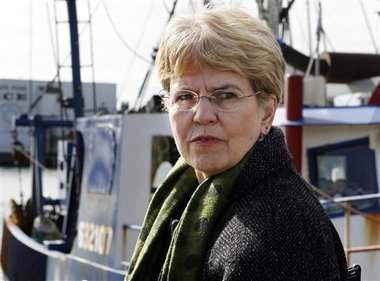
Each year in the U.S. hundreds of millions of tax dollars are spent on what is called fishery management. It’s called fisheries management in the Magnuson-Stevens Fishery Conservation and Management Act. The federal administrative entities which implement the mandates of the Magnuson-Stevens Act are designated in the Act as Regional Fishery Management Councils, and the bureaucrats and scientists who are involved in those mandated activities are referred to as fishery managers.
But all things considered, can what the Magnuson-Stevens Act mandates, what the Regional Councils are charged with and what the managers do be considered fishery management?
Let’s consider what management of either naturally occurring or cultured living organisms (other than fish and shellfish) actually entails. The most obvious requirement of managing them is the provision of something between an adequate and an optimum environment, including both the living and the non-living components of that environment, for the species/species complexes being managed. This is regardless of whether the management process is aimed at optimizing the production of one (or a few) species or at maintaining an area in a so-called “natural” state (though how close any area can be to natural, considering humankind’s pervasive impacts on virtually the entire biosphere, is open to argument).
Whether it’s a herd of dairy cattle, a field of poppies, a national park or an entire watershed, the involved individual or collective managers are charged with maintaining an appropriate environment for the organisms/systems being managed.
How does “fisheries” management fit in with this? Quite obviously and not so surprisingly, not all that well.
When we are considering maintaining (or ideally, increasing, though in the U.S., Canada and the EC in particular we’re far from ready for the “giant step” of increasing the harvest) capture fisheries in natural systems, there is a host of both natural and anthropogenic factors that play a significant role in determining the population levels of particular species. Among them are:
· Water quality · Entrainment/impingement · Water temperature · Disease/parasites · Wind direction/duration · Parasitism · Upwelling
· Turbidity · Food availability · Competition · Predation · Cannibalism · Essential habitat availability · Reproductive success · Fishing
And there are undoubtedly others.
So what do the people in the ENGOs who, with a bunch of help from their foundation keepers, have become so adept at manipulating the press, the pols and the public do when there aren’t enough fish? They demand that the managers reduce (or eliminate) fishing. This is regardless of the effect of any other factor on the particular fish stock or the effectiveness of reducing or limiting fishing in rebuilding the stock in question (and “rebuilding” the stock almost always means returning it to maximum population levels).
And the managers for the most part go along because they have to do something to justify their positions, and thanks to federal legislation controlling (or eliminating) fishermen is a lot easier than controlling just about anything else. It’s easier politically, it’s easier scientifically, it’s easier economically and it’s easier technologically. So what if it isn’t effective? Thanks to the extensive efforts of anti-fishing activists over the last two decades (see Pew and the media Click here), cutting back or eliminating fishing is just about a guarantee of positive media coverage, and there are few politicians, reporters or members of the public who have enough of a grasp of the involved complexities to know the difference. Besides which there will be enough tilapia and swai and cultured shrimp produced overseas to keep the consumers fed – if not in culinary nirvana.
This has cost and is costing the domestic fish and seafood industry untold millions of dollars every year in uncaught fish that could be sustainably harvested. It is denying U.S. consumers the health benefits and the undeniable pleasures of dining on ocean-fresh, locally produced seafood and it is costing our coastal communities tens of thousands of jobs every year.
With what seems a monomaniacal fixation on the effects of fishing, a fixation which has been successfully – and tragically – spread virtually everywhere in this country, many other factors of equal or greater potential to temporarily or permanently interfere with vital ocean processes or the health of our fish stocks have been largely or completely ignored.
At the time it sounded good, at least to the un- or ill-informed
I started this FishNet with a quote from Jane Lubchenco from less than two weeks before the Deepwater Horizon catastrophe began to unwind in the Gulf of Mexico. At the time she was the newly appointed head of NOAA, the agency in the US Department of Commerce that is in charge of about everything non-military in the US Exclusive Economic Zone. Her academic background was as a tide pool biologist. She was a Pew Ocean Fellow and a member of the Pew Oceans Commission and in keeping with the Pew spin on the oceans and their misuse, appeared to believe that she and her ideas could save the world’s fisheries – from the fishermen.
appointed head of NOAA, the agency in the US Department of Commerce that is in charge of about everything non-military in the US Exclusive Economic Zone. Her academic background was as a tide pool biologist. She was a Pew Ocean Fellow and a member of the Pew Oceans Commission and in keeping with the Pew spin on the oceans and their misuse, appeared to believe that she and her ideas could save the world’s fisheries – from the fishermen.
As the quotation demonstrates, she was so concerned with the supposed evils of fishing that she assumed that everything was more than fine with our federal policies regarding the safety of our offshore energy systems. I won’t rehash it here but I’d strongly recommend that you go over the FishNet on this issue I did while the Deepwater Horizon well was still gushing an eventual 5 million barrels of oil into the Gulf of Mexico, Fish and Oil: NOAA’s Attitude Gap, Click here (and delayed Exxon Valdez impacts were still being revealed by researchers in the agency she now headed – see http://www.nwfsc.noaa.gov/news/features/delayed_effects_oilspill/index.cfm.) Perhaps if Dr. Lubchenco and the people she brought with her from the ENGO world weren’t so myopically focused on overfishing, offshore oil wells would have received some of the governmental scrutiny that was, and still is, so illogically directed at commercial fishermen. What are the chances that doing so would have saved the U.S. taxpayers a few bucks and spared the Gulf of Mexico – and the businesses that are dependent on its ecological integrity –the possibly irreversible damages caused by the huge oil spill?
The situation vis-a-vis on-board observers is the most dramatic indication of how skewed perceptions have become regarding ocean/fishery protections. In just about all federally regulated fisheries there are requirements for on-board federal observers, who are increasingly being paid for by the vessel owners/operators. These observed trips range in frequency from 100% coverage of all of the vessels in a fleet to vessels being assigned to carry an observer on a trip once a month or so, and with charges – often to the vessel – approaching a thousand dollars per day at sea. In fisheries in which landings are severely limited, observer costs can force vessels into bankruptcy.
These observers are there to track the catch and bycatch of the vessel to insure that quotas are not exceeded and that the take of protected species are accurately accounted for. There are also requirements for at-sea and at-the-dock reporting, so the catch of a vessel may be reported three separate times.
Surprisingly, or perhaps not so surprisingly considering the attitude of federal policy-level folks like Dr. Lubchenco, there are no requirement for any official observers on oil tankers, drilling rigs or other offshore vessels or structures that could have a negative environmental impact in our EEZ. As we have seen in a history of maritime accidents extending back for at least a half a century, these disasters can cause hundreds of millions of dollars or more in damages.
The following table is from The International Tanker Owners Pollution Federation Limited website (cached by The Wayback Machine at http://tinyurl.com/osw5slv). These were only spills from tankers, not drilling rigs or pipelines. Note that the Exxon Valdez spill, while included, ranked only number 35 in spill size. Note also that the authors assumed that offshore spills “caused little or no environmental damage.” The cached version of the website was from 2007/08.
The table below gives a brief summary of 20 major oil spills since 1967. A number of these incidents, despite their large size, caused little or no environmental damage as the oil did not impact coastlines, which is why some of the names will be unfamiliar to the general public. The Exxon Valdez is included because it is so well known although it is not the twentieth largest spill but rather the 35th.
Position Shipname Year Location Size (in tonnes)
1 Atlantic Empress 1979 Off Tobago, West Indies 287,000
2 ABT Summer 1991 700 nautical miles off Angola 260,000
3 Castillo de Bellever 1983 Off Saldanha Bay, South Africa 252,000
4 Amoco Cadiz 1978 Off Brittany, France 223,000
5 Haven 1991 Genoa, Italy 144,000
6 Odyssey 1988 700 nautical miles off Nova Scotia 132,000
7 Torrey Canyon 1967 Scilly Isles, UK 119,000
8 Sea Star 1972 Gulf of Oman 115,000
9 Irenes Serenade 1980 Navarino Bay, Greece 100,000
10 Urquiola 1976 La Coruna, Spain 100,000
11 Hawaiian Patriot 1977 300 nautical miles off Honolulu 95,000
12 Independenta 1979 Bosphorus, Turkey 95,000
13 Jakob Maersk 1975 Oporto, Portugal 88,000
14 Btaer 1993 Shetland Islands, UK 85,000
15 Khark 5 1989 120 nautical miles off of Morocco 80,000
16 Aegean Sea 1992 La Coruna, Spain 74,000
17 Sea Empress 1996 Milford Haven, UK 72,000
18 Katina P 1992 Off Maputo, Mozambique 72,000
19 Nova 1985 Off Kharg Island, Gulf of Iran 70,000
20 Prestige 2002 Off Galicia, Spain 63,000
35 Exxon Valdez 1989 Prince William Sound, Alaska 37,000
As we saw in the Deepwater Horizon episode, effective federal oversight was sorely lacking, and I’ve yet to see much progress there other than some bureaucratic rearranging and changing the name of the agency in charge. Human nature is human nature, whether the human is on an oil tanker, an offshore drilling rig or a commercial fishing vessel. But the potential for damages with the tanker or the drilling rig can range into the many billions of dollars while a fishing boat might kill a couple of thousand dollars’ worth of over-quota fish. And the income earned by a drilling rig or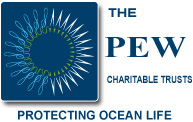 tanker every year is many orders of magnitude greater than the fishing vessel. Yet we don’t have a federal observer on the bridge of every tanker or on board every rig in the Gulf.
tanker every year is many orders of magnitude greater than the fishing vessel. Yet we don’t have a federal observer on the bridge of every tanker or on board every rig in the Gulf.
(It’s important to note here that the Pew Charitable Trusts, which has been directly responsible for much of the anti-fishing efforts over the last two decades, is largely controlled by heirs of Joseph Pew, the founder of Sun Oil/Sunoco.)
Gulf of Maine cod – again it’s not just fishing, and again it’s Jane Lubchenco
“We need a rapid transition to sectors and catch shares. Catch shares are a powerful tool to getting to sustainable fisheries and profitability. I challenge you to deliver on this in Amendment 16, to include measures to end overfishing. I will commit the resources to my staff to do their part to ensure Amendment 16 is passed in June. We are shining a light on your efforts and we will track your progress. There is too much at stake to allow delay and self-interest to prevent sectors and ultimately catch shares from being implemented. We are shining a light on your efforts and we will track your progress. There is too much at stake to allow delay and self-interest to prevent sectors and ultimately catch shares from being implemented.” (Ms. Lubchenco on April 8, 2010 while telling the New England Fisheries Management Council how her policies were going to fix the New England groundfish fishery – by Julie Wormser on the Environmental Defense blog EDFish/.)
What she said the day after her less than prophetic statement that fishing was the biggest threat to the world’s oceans was yet another demonstration of Ms. Lubchenco’s commitment to the naïve idea that just about any problem with the world’s oceans could be solved by adequately controlling fishing.
Six and a half years after her “catch shares revolution” that she kicked off by inflicting it on the New England groundfish fishery, the fishery is in a shambles and New England has lost much of it’s fishing infrastructure. This has all happened as fishing effort has been reduced so many times that far too many fishermen can no longer afford to fish for their own quota or to buy or lease quota from other fishermen in similar straits. So what was wrong with Ms. Lubcheco’s foresight this time?
The recent media mini-frenzy brought about by the release of a study relating the decline of codfish in New England to increasing ocean temperatures will give you some idea. The study was titled “Slow adaptation in the face of rapid warming leads to collapse of the Gulf of Maine (GOM) cod fishery.” Not incidentally, it was funded by the Lenfest Foundation, the fisheries-related grants of which are “managed” by the Pew Trusts.
For an idea of the misdirected zeal with which the people at Lenfest pursue their “scientific” objectives, in their report on Subsidies to U.S. Fisheries, Lenfest researchers R. Sharp and U.R. Sumaila (who was also a Pew Oceans Scholar) list “Fuel Subsidies” as the largest category. They describe these as “exemptions from federal and state fuel taxes and some state fuel sales taxes.” In reality they are refunds of federal and state highway use taxes available to fishermen or any other commercial/industrial users who are “exempt” from the tax. This is because they do not use the federal/state highway systems (http://tinyurl.com/RoadUseTax).
Sharp and Sumaila also include “sales tax exemptions,” which also aren’t fishing-specific subsidies but exemptions from sales taxes which are provided to any businesses for qualified purchases. The authors apparently believe that having fishermen pay taxes that the federal and state governments don’t intend them to pay would eliminate a “harmful subsidy” and “could improve the health of fisheries in the U.S.”
The following quotes were taken directly from the paper (my emphasis added):
· Recovery of this fishery (GOM cod) depends on sound management, but the size of the stock depends on future temperature conditions.
· Based on this analysis, the Gulf of Maine experienced decadal warming that few marine ecosystems have encountered.
· The Gulf of Maine cod stock has been chronically overfished, prompting progressively stronger management, including the implementation of a quota-based management system in 2010. Despite these efforts, including a 73% cut in quotas in 2013, spawning stock biomass (SSB) continued to decline.
· The Gulf of Maine is near the southern limit of cod, and previous studies have suggested that warming will lead to lower recruitment, suboptimal growth conditions, and reduced fishery productivity in the future.
· Gulf of Maine cod spawn in the winter and spring, so the link with summer temperatures suggests a decrease in the survival of late-stage larvae and settling juveniles. Although the relationship with temperature is statistically robust, the exact mechanism for this is uncertain but may include changes in prey availability and/or predator risk. For example, the abundance of some zooplankton taxa that are prey for larval cod has declined in the Gulf of Maine cod habitat. Warmer temperatures could cause juvenile cod to move away from their preferred shallow habitat into deeper water where risks of predation are higher.
· The average weight-at-age of cod in the Gulf of Maine region has been below the long-term mean since 2002, and these poorly conditioned fish will have a lower probability of survival.
· Temperature may directly influence mortality in younger fish through metabolic processes described above; however, we hypothesize that predation mortality may also be higher during warm years. Many important cod predators migrate into the Gulf of Maine or have feeding behaviors that are strongly seasonal. During a warm year, spring-like conditions occur earlier in the year, and fall-like conditions occur later. During the 2012 heat wave, the spring warming occurred 21 days ahead of schedule, and fall cooling was delayed by a comparable amount. This change in phenology could result in an increase in natural mortality of 44% on its own, without any increase in predator biomass.
An article in the Boston Globe about the study reported that “the authors… say the warmer water coursing into the Gulf of Maine has reduced the number of new cod and led to fewer fish surviving into adulthood. Cod prefer cold water, which is why they have thrived for centuries off New England. The precise causes for the reduced spawning are unclear, the researchers said, but they’re likely to include a decline in the availability of food for young cod, increased stress, and more hospitable conditions for predators. Cod larvae are eaten by many species, including dogfish and herring; larger cod are preyed upon by seals, whose numbers have increased markedly in the region.” (Climate change hurting N.E. cod population, study says, David Abel, October 29, 2015.)
While Mr. Abel neglected to mention it, post-larval cod up to maximum size are also consumed by adult spiny dogfish, as are the fish and shellfish that cod feed on. From Bigelow’s and Schroeder’s classic Fishes of the Gulf of Maine, “voracious almost beyond belief, the dogfish entirely deserves its bad reputation. Not only does it harry and drive off mackerel, herring, and even fish as large as cod and haddock, but it destroys vast numbers of them…. At one time or another they prey on practically all species of Gulf of Maine fish smaller than themselves….”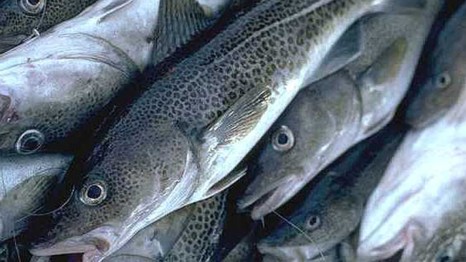
The authors of the report recognized a number of temperature-related factors which might have been contributing to the GOM cod decline and went so far as to state that the earlier warming in GOM surface waters in 2012 “could result in an increase in natural mortality of 44% on its own, without any increase in predator biomass.”
So a group of researchers published a paper in Science that showed that it wasn’t just fishing that was responsible for decreasing populations of cod in the GOM. That’s a good thing, right?
But then, according to an article in The Plate, National Geographic’s food blog, the study predicted that “if fishing mortality is completely eliminated (that is, a complete closure of the cod fishery, such as took place in Newfoundland), Gulf of Maine cod could rebound in 11 years. If some fishing is allowed, recovery would take longer: from 14 to 19 years, depending on how fast the water warms.”
Hard as it is to credit, in spite of all of the indications of the severity of the effects of warming on the GOM cod that the authors identified, the paper that they published in what is supposed to be one of the most important scientific journals in the world couldn’t get past the “it’s got to be fishing” creed as espoused by Ms. Lubchenco and others that has turned managing fishermen into the only “effective*” tool in the fishery managers’ toolbox. Not only has fishing, according to them, reduced this stock to its current depleted status, reducing fishing even further or eliminating it appears in their collective estimation to be the only way to fix it.
I have to get into some fisheries management basics here before proceeding farther. First off, the goal of fisheries management is to have enough fish in a stock after fishing to be able sustain itself (most simply, removals from the stock = additions to the stock). This amount of fish is represented as Bmsy, the biomass (B) that is required to produce the maximum sustainable yield (msy).
If we are dealing with a static environment Bmsy will remain constant. But when the environment changes – as when the temperature changes – with fish that are approaching either end of their comfort range Bmsy will change as well (the authors of the paper provided us with a number of factors related to water temperature which I reproduced in the bullet list above that would explain at least some of these changes). Thus, as the water temperature in the Gulf of Maine (GOM) increased, the cod Bmsy decreased. In plain English, the GOM is capable of producing fewer cod today than it was ten years ago.
For another fishery management basic, all of those factors that account for mortality in a fishery are considered either natural and indicated by M, or due to fishing, indicated by F. For convenience (meaning the scientists don’t have a clue and it’s too much trouble to figure it out what it really is) M is usually assumed to be constant.
“However, in most cases, a single value—usually 0.2—for natural mortality is assumed for stock assessments, despite evidence to the contrary (Pope 1979, Quinn and Deriso 1999, Jennings et al. 2001).” From A Review for Estimating Natural Mortality in Fish Populations, Kate. I. Siegfried & Bruno Sansó
“The traditional assumption of a constant M may be appropriate when only mature fish are of explicit interest in the assessment.” From Estimating Natural Mortality in Stock Assessment Applications, edited by Jon Brodziak, Jim Ianelli, Kai Lorenzen and Richard D. Methot Jr., NOAA Technical Memorandum NMFS-F/SPO-119, June 2011. (I have to point out that in a GOM that’s getting hotter a constant M isn’t even appropriate when “only mature fish are of explicit interest in the assessment.” – NES).
Because, according to management dogma or due to management convenience, natural mortality remains constant by definition regardless of what it actually is, when a stock decreases it must be due to fishing. Accordingly, in spite of the authors having provided at least seven reasons why natural mortality for GOM cod is increasing as GOM temperatures are increasing, and in the face of the inarguable fact that the amount of cod fishing and the cod fishing mortality have plummeted at the same time, the authors conclude that reducing fishing for cod even further than it has been or eliminating it will “fix” the cod stocks.
Predation has and will continue to increase as the water temperature rises. The condition of the cod has declined and will continue to decline as the water temperature rises. Spawning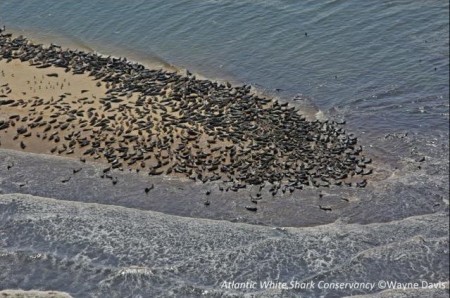 success ditto. Also the survival of late-stage larvae and settling juveniles. And prey availability. And predation on the cod will increase. An example that the authors note is that seals, which are apparently quite fond of a diet rich in cod “have increased markedly in the region.” (For the significance of seal predation on cod stocks, see Seals threaten Scottish cod stock recovery at http://tinyurl.com/SealPredation-Cod.) Yet cutting back on fishing effort again and again and again is still the modus operandi of choice for recovering the GOM cod stocks, regardless of its impact on New England’s fishermen, fishing communities and fishing traditions and regardless of its lack of impact on the recovery.
success ditto. Also the survival of late-stage larvae and settling juveniles. And prey availability. And predation on the cod will increase. An example that the authors note is that seals, which are apparently quite fond of a diet rich in cod “have increased markedly in the region.” (For the significance of seal predation on cod stocks, see Seals threaten Scottish cod stock recovery at http://tinyurl.com/SealPredation-Cod.) Yet cutting back on fishing effort again and again and again is still the modus operandi of choice for recovering the GOM cod stocks, regardless of its impact on New England’s fishermen, fishing communities and fishing traditions and regardless of its lack of impact on the recovery.
That’s about all that needs to be said about the efficacy of fisheries management as espoused by the anti-fishing claque and as embraced by our modern fisheries management regime.
This definitely doesn’t bode well for fishing in any waters that are or will be warming, and that supposedly is or is going to be all of them, but it’s fishing-centric management at the most painfully obvious.
In how many fisheries being “managed” is that the case today? More importantly, in how many of fisheries in which natural mortality has increased due to ocean temperature increase has the permitted fishing mortality been correspondingly adjusted downward? As ocean temperatures continue to increase, how long will it take the fisheries management establishment – at least that part of it that doesn’t depend on foundation funding for hundreds of millions of dollars of “lets keep on beating the overfishing drums” funding, many of them provided by Pew – to admit that the whole idea of “overfishing” and its actual causes needs to be reconsidered.
* “Effective” from the managers’ perspective because it’s all they are allowed to do to manage fisheries.
When the commercial fishing industry didn’t agree with NOAA/NMFS on the status of the monkfish stocks
(Part of the ongoing controversy with New England/Gulf of Maine cod is centered on the difference in opinion between members of the fishing industry and the management establishment about the health of the stocks. I thought it might be instructive to review how a similar disagreement, only this time dealing with monkfish, was resolved fifteen years ago.)
In Framework Adjustment #1 to the Goosefish (monkfish) Fishery Management Plan published in 2001 it was announced that the directed monkfish fishery off the Northeast states would be permanently closed in 2002 due to the low number of fish that were being captured in the annual Northeast Science Center’s bottom trawl surveys (http://www.nefmc.org/library/framework-1-2). The participants in the directed fishery disagreed with the survey results and objected strenuously to the proposed closure, reporting that there were plenty of fish available, and for whatever reason(s) the NOAA R/V Albatross was not capable of catching them. Participants in the fishery – primarily in the Mid-Atlantic – formed the Monkfish Defense Fund (MDF) which convinced NMFS leadership that the fish were there but were not being taken by the researchers. A collaborative industry/NMFS pilot survey validated the industry’s claims that the stock was more plentiful. As a result, Congress provided funding for a collaborative, comprehensive NOAA/NMFS/MDF monkfish survey, again using commercial vessels with a history of successful participation in the monkfish trawl fishery and using their experienced captains and crews and their own gear to conduct the survey. On board the commercial vessels would also be NMFS and state personnel and academic researchers.
The first large scale cooperative monkfish survey took place in early 2001 with two modern trawlers, F/V Drake (out of Portland, ME) and F/V Mary K (out of New Bedford, MA). The commercial vessels did catch the monkfish that the Albatross couldn’t and provided a more accurate biomass estimate. The difference in the monkfish catch between the commercial vessels and the NOAA/NMFS vessel was significant enough that the managers reversed their decision to permanently close the directed fishery. Subsequent cooperative monkfish surveys on commercial vessels were held in 2004 and 2009. The series stopped after the 2009 survey because NOAA/NMFS personnel decided that their new survey vessel, R/V Bigelow, would adequately sample the monkfish stock.
And for an update on spiny dogfish….
(If you missed it, in Dolphins and seals and dolphin, oh my! from this past January I wrote about the almost totally ignored impacts of predation on commercial and recreational fish stocks in New England and the Mid-Atlantic (http://www.fishnet-usa.com/Dogfish%20and%20seals%20and%20dolphin.pdf). Since then the Mid-Atlantic Fishery Management Council has recommended that the spiny dogfish Total Allowable Catch be reduced significantly, based on the results of an assessment update which evidently couldn’t find a whole bunch of these highly efficient predators that were there until a few years back (for a discussion of how efficient they are follow the previous link). Last July Dr. James Sulikowski’s research group at the University of New England in Biddeford, Maine published The Use of Satellite Tags to Redefine Movement Patterns of Spiny Dogfish (Squalus acanthias) along the U.S. East Coast: Implications for Fisheries Management which reported the results of their work to more accurately describe the spiny dogfish stock(s) of the Northeast U.S. (http://journals.plos.org/plosone/article?id=10.1371/journal.pone.0103384),
But before getting into their research I’m going to take a slight detour to discuss the Northeast Fisheries Science Center’s two annual bottom trawl surveys, the primary data source for the assessments of commercially and recreationally important fish species from Cape Hatteras to Maine. These surveys are so influential in assessments because they collectively comprise a time series going back to the early 1960s. In that time NOAA vessels have made approximately the same number of tows of approximately the same nets of approximately the same duration over approximately the same pieces of bottom on approximately the same dates every year. The annual variations in the numbers/weights of the various species being sampled are assumed to be an (approximate) indication of the variations of the total populations of those species. The nets that are used fish on the bottom and don’t sample the entire water column.
The total area sampled is identical from year to year, and the area sampled does not necessarily represent the full range of the species (or stock) being sampled.
The assumption is that the catch of particular species each year is going to be proportional to the total population of that species. Hence, if the trawl survey took 5,000 pounds of scup, for example, in one year and 3,000 pounds of scup the following year, in year two the biomass of scup would be estimated to be 60% of what it was the previous year (the weight used is often the average of several recent years – as specified in the FMP).
This seems to be reasonable if the distribution of the species (or stock) doesn’t change significantly from year to year. But what if it does? What if, for example, the population shifts to the north and to the east, which would be one of the expected reactions to warming ocean temperatures? It seems obvious that the part of the population sampled by the trawl survey(s) will no longer by representative of the total population as it is today, only as it was. And considering that not all of the species sampled are restricted to living in close association with the bottom but at times might move up and down in the water column, it might well be that with a changing temperature regime some species will not be equally susceptible to capture by the bottom tending gear utilized in the trawl surveys.
Getting back to the University of New England spiny dogfish work, from the abstract of the report, “vertical utilization also suggests distinct diel patterns and that this species may not utilize the benthos as previously thought, potentially decreasing availability to benthic (bottom tending gear as used in the NMFS bottom trawl surveys) gear.” In Conclusions the authors write “the results suggest that the estimated spiny dogfish movement patterns calculated from satellite tag data are possibly spatiotemporally asynchronous with the NEFSC bottom-trawl surveys, thus a potentially large percentage (horizontal and vertical “availability”) of these sharks may be unaccounted for in this survey.”
What would be a consequence of underestimating the total biomass of spiny dogfish off the Mid-Atlantic and Northeast states? Obviously one would be underestimating what they were eating, which includes both codfish and the species that codfish eat. But as fishing management is accomplished today, spiny dogfish predation is irrelevant, because even if it were known, nothing could be done about it. The spiny dogfish fishery must be managed like all of our other fisheries, with a harvest limited to what would yield MSY every year. This is in spite of the fact that spiny dogfish are worth pennies a pound to the fishermen while the other commercial species like cod whose populations spiny dogfish are significantly impacting are worth at least an order of magnitude more.
While the Magnuson-Stevens Act, the federal legislation that controls fishing in the U.S. Exclusive Economic Zone, pays lip service to the Optimum Yield in a fishery, something which should allow fisheries to be fished to below the MSY level if that is economically or socially warranted, the Act actually precludes that. As I wrote in 2009:
“One of the requirements of the Magnuson Stevens Act, the federal legislation that controls fishing in the US Exclusive Economic Zone, or more accurately one of the implied requirements of the Act, is that all fisheries be at the level that will produce MSY.
The first of the 10 National Standards that are applied to Fishery Management Plans put in place through the provisions of the Act is “conservation and management measures shall prevent overfishing while achieving, on a continuing basis, the OY (Optimal Yield) from each fishery for the U.S. fishing industry.”
From the Act (16 U.S.C. 1802, MSA § 3): 104-297
(33) The term “optimum”, with respect to the yield from a fishery, means the amount of fish which—
(A) will provide the greatest overall benefit to the Nation, particularly with respect to food production and recreational opportunities, and taking into account the protection of marine ecosystems;
(B) is prescribed as such on the basis of the maximum sustainable yield from the fishery, as reduced by any relevant economic, social, or ecological factor; and
(C) in the case of an overfished fishery, provides for rebuilding to a level consistent with producing the maximum sustainable yield in such fishery.
(34) The terms “overfishing” and “overfished” mean a rate or level of fishing mortality that jeopardizes the capacity of a fishery to produce the maximum sustainable yield on a continuing basis.
The definition of OY supposedly allows for departures from the MSY. However, as even the casual consideration of the above section of Magnuson indicates, that is not the case, or more accurately, that is only the case when a stock isn’t at the MSY level. In that case the stock is considered to be overfished, and if it is considered to be overfished, it must be “rebuilt” to the MSY level by having the

Watch Dr. Steve Cadrins presentation “Strengthening the Scientific Basis of the 2006 Management Requirements: Optimal Yield from Mixed-Stock Fisheries” Click here
harvest level reduced.
But will having every stock of fish in the U.S. Exclusive Economic Zone being managed at the MSY level be economically, socially or ecologically “optimum?” Will it automatically provide “the greatest overall benefit to the Nation, particularly with respect to food production and recreational opportunities?” Economically and socially, emphatically no. Is it even possible? Ecologically a not so emphatic “maybe.” Considering all of the good intentions, all of the effort, all of the pain and suffering and all of the money – both from the public and the private sectors – that is being expended in efforts to reach what are perhaps undesirable and unattainable goals, the results of being tied to the Magnuson concept of OY can be and in demonstrable instances are far from optimum. (from MSY and effective fisheries management, http://www.fishnet-usa.com/maximum_sustainable_yield.htm).
One of the demonstrable instances in which the results are far from optimum is having spiny dogfish at the MSY level in waters off the Mid-Atlantic and New England.
So why is it important to call it fishing management or fishermen management or something similar?
Because no one has much of a clue of the effects of water quality or water temperature or wind direction/duration or upwelling or food availability or of much of anything else on fish stocks. As a matter of fact they lump all forms of non-fishing mortality together, call it Natural Mortality – as opposed to Fishing Mortality – and assume that it is a constant. Natural Mortality plus Fishing Mortality is by definition equal to total mortality. So obviously the authors at the Gulf of Maine Research Institute can report that fishing mortality is what’s driving the Gulf of Maine cod population, because that’s what fisheries science and their models demand. It doesn’t matter how many codfish the burgeoning stocks of spiny dogfish eat nor does it matter how much of the prey species that codfish depend on is left after the dogfish get done with them, because codfish mortality that isn’t due to fishing doesn’t vary. All that varies is fishing, and the only way to have more fish is by reducing fishing. And if it can’t be reduced enough, then stop it.
The only way real fishery management has a chance of working will be by identifying and quantifying all of the major forms of mortality on each fish stock being managed, and by either controlling at beast or at least allowing for all of those other sources of mortality – which in no way in the natural world can add up to a constant year after year.
Once we’re at that point we’ll never have to look at a fishery that continues to decline, regardless of how much we cut back on fishing mortality, and force the fishermen to continue to pay the price for other factors that we either can’t or that we feel that it’s too inconvenient to control.
As I concluded in MSY and effective fisheries management six years ago (cited above):
“The so-called conservationists involved in fisheries would have us believe that there’s some sort of “natural balance” possible in our inshore and offshore waters and that, if fishing is reduced adequately across the board, this mythical balance can be reestablished. That is far from the case.
In their Rousseau-inspired misconception of what the oceans should be, they look at anthropogenic effects as categorically bad, with fishing in general and not harvesting every stock at the MSY level in particular among the worst. This is not necessarily the case. Fishing can be an effective management tool. In the case of species like herring, menhaden and dogfish, allowing – or encouraging – harvest levels above what would be considered “sustainable,” and then maintaining the populations at lower than maximum levels by carefully regulating harvest might be all that is necessary to return “overfished” stocks of much more valuable species back to their OY levels.
Take, for example, the current situation regarding the New England groundfish complex. Fishermen have been hit with a seemingly interminable series of harvesting reductions extending back well over a decade. These cutbacks have been so severe that, if the most recent “management” proposal by NMFS is instituted, boats will be allowed to fish only 20 days a year.
This is due to the fact that several of the groundfish stocks haven’t been recovering as they were expected to (at least by the managers) following previous drastic reductions in fishing effort. At the same time, as we’ve seen above, the stock of spiny dogfish, notoriously voracious predators on groundfish and their prey species, have been allowed to increase unrestrictedly. And the even larger Atlantic herring stock could be impeding the groundfish recovery as well.
Reduce the number of spiny dogfish? Of course not. The Magnuson Act won’t permit it. Reduce the number of herring? Ditto, but for political rather than biological reasons.
But what if we could? Using such an approach, the economy will benefit, the ecosystem will benefit (through increased biodiversity), and the fishing communities that are dependent on “balanced” fisheries will benefit as well.
And there are other fisheries that are facing ever more stringent harvesting restrictions each year because they aren’t performing as the fishing-centric computer models predict that they should. The summer flounder fishery in the mid-Atlantic is one. What’s the impact of spiny dogfish on the summer flounder stock?
An EEZ that is being managed to provide the optimal harvest from a complex of interacting species would seem to be preferable to what we have today. The way we’re doing it today, our most valuable fisheries are increasingly subject to the depredations of other, less valuable species that enjoy the protection of a management regime that is totally stacked against rational management. If fewer spiny dogfish, fewer Atlantic herring or fewer menhaden will mean an increase in more valuable, more desirable or more threatened species, then why shouldn’t the people responsible for fisheries management be provided with the administrative wherewithal to allow this? Legislation mandating that they can’t isn’t benefitting anyone beyond the few anti-fishing activists who have built careers on saving fish stocks that clearly don’t need saving, and it’s certainly not benefitting the ecosystem. So why do we have it?”
Algae bloom threatens Prince Rupert’s gill net fleet
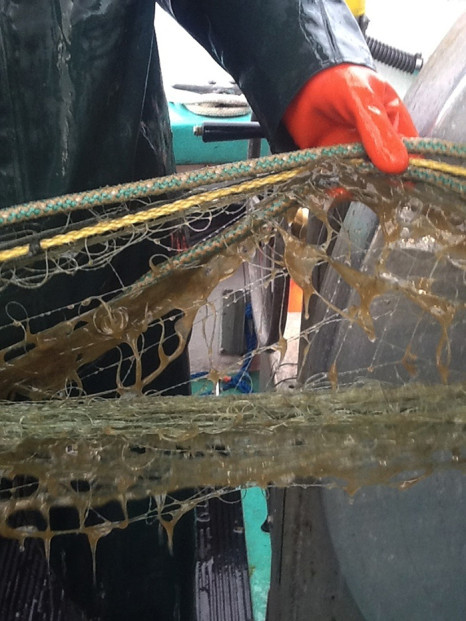 The Prince Rupert gill net fleet has been hit hard by a massive algae bloom and may be forced off the water. “It’s crippling me as far as catching fish goes. Everything on the boat is dirty from [algae] including me and you can’t catch any fish because they can see the net, it’s like a blanket out there,” said Claude McDonald, 76, a gill net fisherman based in Prince Rupert. A sticky, thick algae is being singled out as the reason for extremely dismal salmon catches so far this season. Mud is the name given to the plankton by fisherman due to its thick viscosity and muddy colour. Read the rest here 10:18
The Prince Rupert gill net fleet has been hit hard by a massive algae bloom and may be forced off the water. “It’s crippling me as far as catching fish goes. Everything on the boat is dirty from [algae] including me and you can’t catch any fish because they can see the net, it’s like a blanket out there,” said Claude McDonald, 76, a gill net fisherman based in Prince Rupert. A sticky, thick algae is being singled out as the reason for extremely dismal salmon catches so far this season. Mud is the name given to the plankton by fisherman due to its thick viscosity and muddy colour. Read the rest here 10:18
American Style Environmentalism is Destroying The Environment
Tue May 8, 2012
John Johnson
This is the first of a series of articles exploring the failing model of American Environmentalism. In the series I will be outlining the results of considerable investigation and study of the persons and organizations, whose claims of acting on behalf of the environment have fallen far short of the truth. I will also be calling attention to the current genre of environmental propaganda, where it emanates from, who is producing it, and how it’s timely influence on public opinion has been used to place a very few in control of vast amounts of natural resources. In these articles I will explain facts uncovered and ask you to challenge pre-conceived notions and consider the evidence. What I will not do, is propose theory or editorialize about intentions, I prefer to let the facts speak for themselves and will not fill in the gaps with unproven accusation. This isn’t an easy topic to write about and I have no budget and very little help with it, so any information and input from readers will be greatly appreciated.
Today a majority of people in the US consider themselves to be environmentalists, or at least environmentally friendly, and an overwhelming majority express concern for the well being of the natural world and try to do less harm to it in their lives (I am proud to be a member of the first group.) For this majority environmentalism is about how you live your life and the small decisions that help to make our world better. Many people from this group donate time and money to environmental organizations taking action however they can. Unfortunately in many cases their good intentions are high jacked by clever salesmanship, cause marketing, and a broad based use of the media that pushes the public toward actions that make people feel good and away from doing any real good. I will use a real world example that more than makes the point.
Dawn dishwashing liquid (distributed by Proctor and Gamble) has a wildlife campaign that is advertised on the bottles of soap. The bottles proudly proclaim, “Dawn Helps Save Wildlife,” and feature heart warming pictures of ducks, penguins, and even two seals kissing (My personal favorite.) When you buy bottles of Dawn with these images a donation is made to an organization that advocates for wildlife protection. This decision to spend a little extra to help wildlife feels good. Like one of the little decisions we can all make every day to make the world better. Since they use the soap to wash off birds and mammals that have been harmed by oil spills it just makes sense. I was dismayed to learn that a large percentage of the bottles contain an extremely harmful pesticide that not only harms wildlife, but is doing massive amounts of environmental damage contributing to global warming and the destruction of the marine food web, actually starving the wildlife they claim to help.
The pesticide is called, “Triclosan,” and is an anti-bacterial agent found in an increasing number of soaps and other products sold in the US. Over the last ten years it’s use has increased dramatically and since it doesn’t readily breakdown in the environment, and cannot be removed by waste water treatment, rivers of it are running into the sea. Once it enters aquatic systems it kills phyto-plankton, (Microscopic plants that form the foundation of the ocean’s food web). The tiny organisms that remove carbon dioxide from the atmosphere and produce half of the world’s oxygen have declined dramatically (40 percent since 1950) causing mal-nutrition and loss of size in fish stocks around the world. Triclosan is a bio-accumulating substance and has been found in Dolphins and in drinking water supplies where it has been nearly impossible to filter out. Efforts to get it banned have failed due to the fact that the public remains largely ignorant of the problem as their attention is directed toward other environmental issues that do not affect publicly traded corporations.
Article Photo
Green chemicals to green wash everything.
http://www.foodandwaterwatch.org/factsheet/triclosan-what-the-research-shows/
http://www.foodandwaterwatch.org/factsheet/triclosan-what-the-research-shows/
http://www.foodandwaterwatch.org/blogs/down-the-drain-and-into-dolphins/
What happens to the donations made to wildlife advocacy groups when one purchases a hazardous chemical that damages the environment will be the topic of a future article.
We hear a lot in the media from environmental organizations and I like most people always accepted as credible the majority of statements made by these non-profit groups. I thought of them as mostly staffed by volunteers dedicated to the environment and imagined funding to come from kind persons with the means to help. I always found reports that they were only interested in control of natural resources to be less than credible, and usually from sources that were interested only in the exploitation of the natural world. Those populist views taught to me by the media were discredited by observation of the actions of the environmental industry and the simple fact that anyone no matter what their intentions or qualifications, can start an environmental group coupled with the premise that securing funding is made easy if their advocacy serves the agenda and business goals of resource oriented business owners and their foundations.
Article Photo
This graphic speaks volumes…
To say that all non-profit environmental organizations are good or bad is to paint with way too broad a brush in either case. The proliferation of non-profits and the variety of funding for them has left us with a growing industry that is largely un-regulated and represents a tremendous tax-payer investment not only in lost tax revenue (from deductions) but also in government funding for projects overseen by these organizations. A lack of oversight and accountability for the non-profits has left us with an incredibly expensive industry that is wide open to fraud and abuse. When you look at how much funding is pouring into these organizations and how much of it comes from the biggest polluters, exploiters, and resource accumulators of our world it doesn’t take long to realize that the people that are funding the organizations could be paying for some say in which environmental issues get attention and which ones don’t.
This is a very important topic to me. The stakes for our nation and our world are extremely high. We desperately need the mission that the environmental movement set out to accomplish to succeed. Sadly what started out as the best form of activism has been corporatized, politicized, and the few activists who would do real good have been marginalized, leaving the natural world with few obviously true advocates, and an increasing number of questionable ones.
Fish in the Northwest Atlantic Are Going Hungry New Science From Maine’s Department of Marine Resources Helps To Explain Why
 We posted this link about Bigelow Lab and its phytoplankton surveys in the Gulf of Maine, conducted from the back of a truck while utilizing the belly of the Nova Star ferry to do its work. This was an important story that took a back seat to the unbelievable Gulf of Maine Cod survey (click here) , and its predictable affects. Dozens of articles have been spawned because of it. This article (click here), written by John Johnson on Wed Sep 7, 2011 and the Bigelow Lab article should be read to understand the complexities of the situation, and point out the simple minded notions of the Pew/CLF groups are hyperboly, at best. 22:10
We posted this link about Bigelow Lab and its phytoplankton surveys in the Gulf of Maine, conducted from the back of a truck while utilizing the belly of the Nova Star ferry to do its work. This was an important story that took a back seat to the unbelievable Gulf of Maine Cod survey (click here) , and its predictable affects. Dozens of articles have been spawned because of it. This article (click here), written by John Johnson on Wed Sep 7, 2011 and the Bigelow Lab article should be read to understand the complexities of the situation, and point out the simple minded notions of the Pew/CLF groups are hyperboly, at best. 22:10
Fish in the Northwest Atlantic Are Going Hungry – New Science From Maine’s Department of Marine Resources Helps To Explain Why.

This should be an ideal time for both New England’s fishermen and conservationists. Decades of sacrifice have caused the loss of (according to some reports) over 80 percent of fishing and fishing related jobs. This period of continuous decline has ended with the rebuilding of most of the fish stocks and the stabilization of the fisheries to sustainable catch levels. The ocean has healthy populations of marine mammals where just a couple of decades ago there were few. The plan to rebuild all fish stocks to optimum levels at the same time was considered by many to be biologically impossible but nature sure showed them…didn’t it?
Many anecdotal reports indicate that all is not well in the ocean off of New England. Reports of undersized cod, scrawny haddock, tuna with low fat content and other quality issues indicate a lack of nutrition in the fish stocks that many have attributed to a lack of forage fish like sea herring. A lack of herring and especially large herring attributed for the most part to fishing activity by the herring boats has been put forth as an underlying cause. The discovery that the herring are going hungry and have seen the same type of size and quality declines related to being under-nourished as the other fish puts these misguided claims into perspective. Over-fishing of sea herring would leave plenty of food available for the remaining herring but such is not the case.

An ecosystem as vast as the ocean is difficult to understand due to the large amount of predator prey relationships and the constantly changing conditions of those relationships and the environment itself. Understanding what is going on with some of the individual species is in many ways the best method to gain insight into what is going on with the system as a whole. The Department of Marine Resources in Maine has been studying the sea herring population for the last fifty years and have recently presented a new study that describes the decline of herring size, weight and quality over the last four decades. I was lucky to have attended this excellent presentation and was very surprised by their findings as to both the depth of the decline and the strong evidence supporting the cause of it.
The presentation was called, “Where are all of the big herring? Atlantic Herring (Clupea harengus) size at age decreases over time in the Northwest Atlantic.” It was the inspiration of James Becker a marine resource specialist two with the Department of Marine Resources in Boothbay Maine. It was also the work of Adam St. Gelais a marine resource specialist one. For the study they used data from the DMR Atlantic Herring Historical Database with it’s fifty years of data from over 1.2 million individual fish. The age, lengths, whole weights, gonad weights, spawn condition, dates, gear type, catch locations and even stomach contents are all contained in the database. A wealth of historical information that can be used to spot trends and changes in the state of the Atlantic herring.
Some highlights from the presentation were herring whole weights declining 40 to 60 percent and herring lengths declining 1 to 2 inches across all age classes. The overall condition factor (A ratio of length to weight that indicates how nourished a fish is) of all age classes of herring is in a declining trend as well. The reduction in size at age is not particular to herring and has been documented in other species in the gulf of Maine. The possibility that the fishery is selecting for smaller fish or that these trends are the result of fishing activity is ruled out by the fact that the downward trend is present in all of the age classes of fish and the mean age of fish landed remains constant over time.



The hypothesis that these declines are due to environmental factors is supported by a strong correlation between fish weight and length declines and sea surface temperature variations that are part of the Atlantic Multidecadal Oscillation, an oscillating fluctuation in sea surface temperatures with a period of about 60 years. Similar environmental fluctuations across the globe have been shown to impact fish populations and set a strong precedent for the correlations shown in this study. The mechanisms for this could be food limitations or alteration of trophic composition that have an impact on both the reproductive ability and the overall condition of the fish. The availability of plankton or the lack there of was noted but not a part of the study.



I found the explanations offered in the presentation to be extremely plausable. In the last ten years there has been a remarkable decline in the amount of feed in the ocean off of New England. On herring vessels we have excellent sounding equipment and used to drive over shoals of plankton that seemed like they would never end. Today that would be a rare thing indeed to see that much feed in the water. As a kid I remember old fishermen telling me the rise and decline of fish populations is cyclical and not under the control of managers and legislators. These claims were from observations made during life times spent at sea catching fish and not from any amount of academic study, it is interesting to learn of science that seems to indicate a cyclical pattern like they described. One thing is certain if the so called “Forage fish,” do not have enough to eat, there is going to be problems in the rest of the food chain.
I would like to thank the scientists at Maine DMR for their diligence and thorough efforts. It is through excellent work in the marine sciences like theirs that the future of our marine resources and ocean ecology are preserved.
James Becker (Marine Resource Specialist 2) presenting and documenting the decline in size and weight of herring in the Gulf of Maine and the waters of the New England Sea Coast. This video is a clip from a presentation by James Becker and Adam St.Gelais titled, “Where are all of the big herring? Atlantic Herring (Clupeaharengus) size at age decreases over time in the Northwest Atlantic.”
James Becker (Marine Resource Specialist 2) narrowing the scope of the documented decline in size and weight of herring in the Gulf of Maine and the waters of the New England Sea Coast. This video is a clip from a presentation by James Becker and Adam St.Gelais titled, “Where are all of the big herring? Atlantic Herring (Clupeaharengus) size at age decreases over time in the Northwest Atlantic.”
Adam St.Gelais (Marine Resource specialist 1) with Maine Department of Marine Resources discusses the correlation between the AtlanticMultidecadal Oscillation (an oscillating fluctuation in sea surface temperature) and the decline in size and weight of all age classes of sea herring in the Gulf of Maine and the surrounding waters of the New England Sea Coast.This video is a clip from a presentation by James Becker and Adam St. Gelais titled, “Where are all of the big herring? Atlantic Herring (Clupea harengus) size at age decreases over time in the Northwest Atlantic.”

All images and video are copyrighted works all rights reserved. The graphics and science were brought to you by the scientists at Maine Department of Marine Resources and are published here with their permission.
Fish and Future
November 12, 2005
Fish will always be with us. And that is a good thing, because fish is good for us. As more and more research proves, eating fish at least once a week reduces – to repeat – reduces our cholesterol levels; reduces our risk of Alzheimer’s disease; reduces our risk of stroke. Eating fish, such as salmon and tuna, which are rich in omega-3 fatty acids, has been shown to prevent heart disease. Some studies even suggest that eating fish fights osteoporosis; and other studies indicate positive effects on certain forms of cancer. “Eat Fish; Live Longer” was an earlier slogan suggested by the many health benefits of eating fish at least once a week.
Fish makes us live longer and live better. Eating fish postpones age-related mental decline by three to four years, suggests one of the latest studies. This research provides further evidence that a fish-rich diet helps keep the mind sharp. “Eat Fish; Stay Young” is the new slogan launched by Ann Shriver, the executive director of the International Institute of Fisheries Economics and Trade.
Those who make a living from the ocean are not lone rangers. While at sea they tend to be in constant contact with each other – visually and, today, electronically. While on land they tend to be stable members of compact communities. Thus fish is sociologically good for us.
Fish is sociologically good for us, we realize, also if we look at ourselves retrospectively. Fish is such an intrinsic part of our heritage that it defines who we are. Say that you hail from Gloucester, and most people in the world recognize not only who you are – that you share some part of an age-old fish story; they will also know which part of the world you come from. People do not say, “Gloucester, where?” So you cut down on the idle talk and can immediately engage in more serious conversation.
Fish is economically good for us. A dollar’s worth of fish feeds more mouths than a dollar’s worth of trade or services. Its multiplier effect is higher, because it creates wealth anew. A dollar’s worth of fish feeds the butcher and the baker, and the oil maker – and the banker and the insurer.
Indeed, fish is good for the nation as a whole because, if we do not produce fish, we are so hungry for it that we import fish from abroad – in large quantities. And we put our nation more heavily in debt with foreign nations. Now we have to remember that a dollar sent abroad is a claim on our wealth at home. Sooner or later, those dollars will be converted into control over our resources at home.
That fish is good for us is indisputable. Doubts today are planted as to whether fish will always be with us. Are not most commercial species of fish depleted? Yes, in part. But this answer does not look at the entire biomass. While some species are depleted, others are superabundant. Scary headlines insist that cod and other bottom fish are depleted; yet, mackerel and herring – the pelagics that live in the middle of the water column – are still superabundant.
It is only by looking at the entire biomass and the relationships among predators and preys that we might be able to find lasting and equitable solutions to the future physical utilization of the harbor. So far, we have identified one major predator-prey relationship: bottom fish and pelagics are in such a relationship. This is clearly visible as soon as one abandons the static, linear, pyramidal conception of the biomass. Predators are not always predators and preys are not always preys. At times predators become preys and vice versa.
The relationship is this. The larvae of the bottom fish need to go to the surface of the ocean in order to obtain food – plankton – and light. While they go up, they become a feast for the pelagics. When those larvae that survive become codlings, they want to go back to their friends and relatives. While they descend to their native habitat, they become a second feast for the pelagics.
In collaboration with volunteers from the MIT Systems Dynamics program, at the Gloucester Community Development Corporation we have quantified these relationships and published them on the Internet at www.gloucesterdc.org. Dr. Peter Otto and Jeroen Struben have also published part of this study in the prestigious System Dynamics Review (Winter 2004). This study makes it clear that, if biological limits are not respected, the situation can be reversed – and the bottom fish can become so superabundant as to threaten the existence of the pelagics.
A collapse of the pelagics would of course affect especially those migratory fish that rely on the pelagics for their feed: especially tuna. Yet a superabundance of the pelagics is definitely not good for the bottom fish. The evidence is overwhelming. Codlings have been found in the stomach of herring and mackerel. The first predator-prey model was developed by a biologist and a mathematicians studying the fishing industry in the Adriatic in early 1900s. The validity of the predator-prey model has been confirmed by chaos theory. The predator-prey relation has been found in nature in all living species, even in trees, even in lemmings.
Those who have memory of local history will remember that when Lippman Marine was in existence converting pelagics into chicken feed, and thus helping maintain a balance in the predator-prey relationship in the ocean, the bottom fish was in good health.
This history and this research lead to only one conclusion. Local fishermen are unjustly accused of overfishing the oceans. When looked in the context of these relationships within the total biomass, the overfishing is clearly done – not by fishermen – but by the natural predators of the bottom fish. And certainly this research does not excuse the fishermen for such well established negative practices of the past as using too small mesh sizes, for uprooting the bottom floor of the ocean, for fishing while and where fish are spawning, for harvesting bottom fish while fishing for pelagics, and the like. Nor is this research a call for over-exploitation of the pelagics. The issue, as usual, is an issue of balance. All rights have to be established and respected on the basis of corresponding responsibilities.
There is not one fishing industry in Gloucester. There are at least three such industries: bottom fish, pelagics and tuna – let alone lobstering, sportfishing and whale watching. All these interests have to be taken into account. They are all entitled to their share of the fruits of the ocean. But none is entitled to control over the entire ocean.
The question for Gloucester then is not: Will there be fish in the future? If we respect the natural balance among those various natural and economic interests, there will be fish. That is for sure. The real question is: Will Gloucester be ready for fish?
Gloucester became a “hub” harbor, an infrastructure that serves the interests of the entire New England fishing industry – including, to repeat, pleasure boating and sportfishing. It took about 400 years to develop this infrastructure. It can easily be destroyed. It cannot easily be rebuilt.
The question is: Will Gloucester be ready for fish, when a balance in the use of the oceans’ resources for the benefit of human beings is re-established in the future?
Carmine Gorga is president of Polis-tics Inc.
The predator-prey model
The predator-prey model presented at Congressmen Teirney and DeFazio’s Listening Session in Gloucester by Dr. Carmine Gorga
July 1, 2014
Thank you, Congressman Tierney
Thank you Congressman DeFazio
For coming to Gloucester.
There is much that the US Congress can do to help a fishing community like Gloucester.
Today I would like to focus our attention on issues of science.
Specifically, the existence of the predator-prey model of relationships among fish stocks—and its absence from the deliberations of NOAA and NMFS.
As an occasional reader in biology, I have been impressed by the repeated confirmation of the validity of the predator-prey model, a model of the behavior of “organic systems.”
In 1997 I presented the model in this fashion in a paper published with Stuart Weeks in a peer-reviewed journal:1
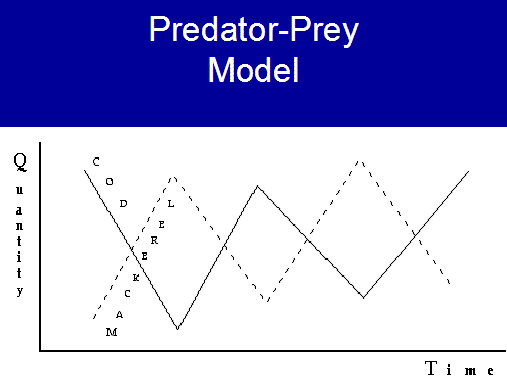
Figure 1. A Simplified Predator-Prey Model
When the biomass of predators—here symbolized by mackerel—grows, the biomass of prey— here symbolized by cod—declines. This is a natural behavior that was first mathematically modeled by Alfred J. Lotka and Vito Volterra, a mathematician and a biologist, while studying the cyclical disappearance of anchovies from the Adriatic Sea in the early 1900s. Does not bottom fish cyclically disappear from our shores?
This model has come to form the basis for the understanding of chaos theory,2 because, as it can be seen from Figure 1, trends are discontinuous and their reversal occurs abruptly. Predators of today become prey of tomorrow.
This model is of immediate comprehension as soon as one sees the larvae of bottom fish, like cod, rising to the surface of the ocean for food—plankton—and light. When they rise from the bottom to the top of the water column, they become a feast for their natural predators, like mackerel, which live in the middle of the water column. Once they grow, codlings need to go back to their friends and relatives—to their natural bottom habitat.
While they go to the bottom, codlings offer again a feast to predators that live in the middle of the water column. Codlings have been found in the stomach of mackerel. This is a well-known fact.
Validity of the Model
We hear much of the behavior between the sheep and the wolf in the West; lately, we in the East hear more and more of the same behavior in the relationship between the deer and its natural predators. It was discovered that even lemmings are subject to the same behavior: They do not fall off cliffs to make us laugh. They are being pursued by their natural predators.
I was astonished to learn that the underbush and large trees behave in the same fashion.
A Simplified Model
The model outlined in Figure 1 is a simplification of the biological reality, because at the top of the water column other interrelationships are taking place. Even while they are predators of bottom fish, mackerel are in turn prey of seals, tuna, and birds.
As can be seen from Figure 2 below, complications arise in this model also because the full cycle is composed of four rather than two phases. While most of the cycle is taken up by the oscillating phases of predator and prey (regions A and C), during two other phases predators and prey grow together or decline together (regions B and D)3—as in daylight and darkness, more light and more day, more dark and more night. For the biomass, mostly all depends on the availability of food supplies and oxygen.
Figure 2. Four-Phase Cycle
A General Recommendation
The recommendation that flows from these studies is that the Magnuson-Stevens Act ought to be reformed in such a way as to assure that all decisions concerning fisheries management are, from now on, taken on the basis of full knowledge and respect of the findings of this scientific model of the behavior of fish stocks.
A Specific Recommendation
Predators in abundant supply need to be harvested in order to protect species that are becoming scarcer and scarcer prey of the moment. This precept ought to drive modern fisheries management behavior—rather than receiving guidance from sporadic and spotty surveys of fish stocks.
A general Observation
NOAA and NMFS are trying to do too much. The US Congress should put them in a position to do two things well. Learn and teach us all everything about predator-prey relationships—and control destructive practices of large fisheries operations, leaving the family fishing fleet well alone.
Thank you, Congressman Tierney
Thank you, Congressman DeFazio
Thank you for your attention.
References
1. Carmine Gorga and Stuart B. Weeks, “Fisheries Renewal: A Renewal of the Soul of Business,” The Catholic Social Science Review, Vol. II, 1997, pp. 145-161.
2. James Gleick, Chaos: Making a New Science, New York: Penguin Books, 1987.
3.Ralph H. Abraham and Christopher D. Shaw, Dynamics—The Geometry of Behavior. Part 1: Periodic Behavior. Santa Cruz, CA: Aerial Press, 1981.
*Carmine Gorga, a former Fulbright Scholar, is president of The Somist Institute, a research organization in Gloucester, Mass. Through The Economic Process, To My Polis, and numerous other publications in economic theory and policy, he has transformed economics from a linear to a relational discipline. Dr. Gorga blogs at www.a-new-economic-atlas.com and www.modern-moral-meditations.blogspot.com.
Asian carp invasion a growing problem
 No one really dreams anymore of completely ridding the Wabash River of invasive, destructive — and, let’s be honest, ugly-looking — Asian carp, a voracious breed of fish that grows quickly, reproduces rapidly and vacuums up so much microscopic plankton that it can starve out native species higher up the food chain. Read more here 11:26
No one really dreams anymore of completely ridding the Wabash River of invasive, destructive — and, let’s be honest, ugly-looking — Asian carp, a voracious breed of fish that grows quickly, reproduces rapidly and vacuums up so much microscopic plankton that it can starve out native species higher up the food chain. Read more here 11:26
Over demanding market affects fisheries more than climate change
 Summary: Fisheries that rely on short life species, such as shrimp or sardine, have been more affected by climate change, because this phenomenon affects chlorophyll production, which is vital for phytoplankton, the main food for both species. Read more here sciencedaily 16:37
Summary: Fisheries that rely on short life species, such as shrimp or sardine, have been more affected by climate change, because this phenomenon affects chlorophyll production, which is vital for phytoplankton, the main food for both species. Read more here sciencedaily 16:37
Transcriptomics helps researchers trace origins of codfish decline

 The mega-decline in cod and other fisheries across the North Atlantic Ocean threatens the livelihood of fishermen and communities in New England and Atlantic Canada. One suspect in the disappearance of cod and other groundfish is the food source for their young: a planktonic copepod crustacean, no larger than a grain of rice. Read more here 12:08
The mega-decline in cod and other fisheries across the North Atlantic Ocean threatens the livelihood of fishermen and communities in New England and Atlantic Canada. One suspect in the disappearance of cod and other groundfish is the food source for their young: a planktonic copepod crustacean, no larger than a grain of rice. Read more here 12:08
Climate Change Forces Reevaluation of Fishery Management. (Isn’t that right, John?)
Scientists now think that altered zooplankton populations may be one reason cod stocks haven’t rebounded as quickly as expected. In addition, water temperatures in southern New England are getting uncomfortably warm for cod. So they’re moving northward and offshore in search of cooler water.. And they’re not alone. Over the past fifty years, more than half of all commercially exploited species have responded to warming waters by changing where they live. That includes the fish that used to fill Eldredge’s weir. Read [email protected] 21:57
Waters off B.C. coast awash in plastic particles, says head of new ocean pollution program (with video)
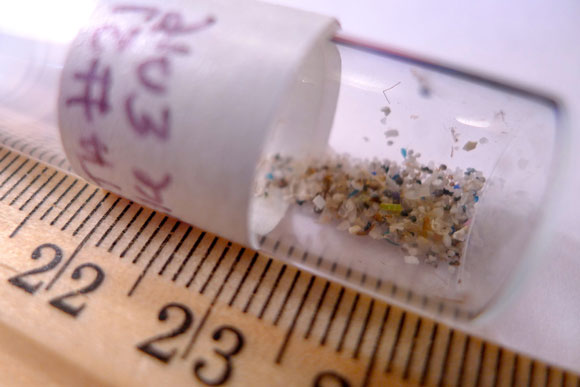 Based on 34 water samples taken between inshore waters and 1,200 kilometres due west of Victoria, the concentrations of microplastics — pieces typically the size of a coffee ground — were found to increase in proximity to the mainland coast. Microplastics can be ingested by plankton, invertebrates and other marine life forming the base of the food chain; ingestion of plastics may make organisms think they are full, causing them to starve. Read more@vancouversun 12:13
Based on 34 water samples taken between inshore waters and 1,200 kilometres due west of Victoria, the concentrations of microplastics — pieces typically the size of a coffee ground — were found to increase in proximity to the mainland coast. Microplastics can be ingested by plankton, invertebrates and other marine life forming the base of the food chain; ingestion of plastics may make organisms think they are full, causing them to starve. Read more@vancouversun 12:13
Arctic waters increasingly vulnerable to foreign species
 When most people think of climate change, they picture polar bears, not zooplankton. Zooplankton are a huge group of water organisms which range from microscopic crustaceans to jellyfish and live in both fresh and salt water. Just about everything in the ocean eats zooplankton, from tiny fish to huge whales. In other words, they’re important to the Arctic food chain. But that food chain is about to change dramatically because of climate change and increased shipping traffic, according to some recent studies. more@nunatsiaqonline 18:00
When most people think of climate change, they picture polar bears, not zooplankton. Zooplankton are a huge group of water organisms which range from microscopic crustaceans to jellyfish and live in both fresh and salt water. Just about everything in the ocean eats zooplankton, from tiny fish to huge whales. In other words, they’re important to the Arctic food chain. But that food chain is about to change dramatically because of climate change and increased shipping traffic, according to some recent studies. more@nunatsiaqonline 18:00
Tiny sea creatures are heading for extinction, and could take local fisheries with them
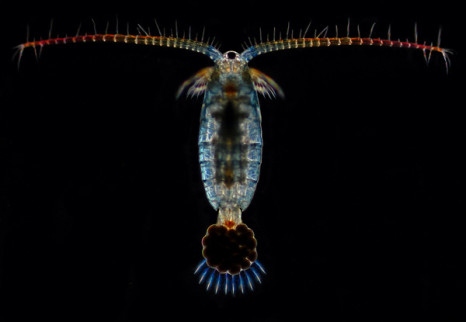 A species of one of the world’s tiniest creatures, ocean plankton, is heading for extinction as it struggles to adapt to changes in sea temperature. And it may take local fisheries with it. Answering the question of adaptation is not easy as it requires long-term observations spanning multiple generations. For this study, the research team examined a 50-year time series from the North Atlantic on the distribution and abundance of two very common but contrasting species of ocean plankton, Calanus helgolandicus that lives in warmer water and Calanus finmarchicus that lives in cold water. These crustaceans are vital food for fish and underpin many commercial fisheries in the North Atlantic region. [email protected]
A species of one of the world’s tiniest creatures, ocean plankton, is heading for extinction as it struggles to adapt to changes in sea temperature. And it may take local fisheries with it. Answering the question of adaptation is not easy as it requires long-term observations spanning multiple generations. For this study, the research team examined a 50-year time series from the North Atlantic on the distribution and abundance of two very common but contrasting species of ocean plankton, Calanus helgolandicus that lives in warmer water and Calanus finmarchicus that lives in cold water. These crustaceans are vital food for fish and underpin many commercial fisheries in the North Atlantic region. [email protected]
Absence of right whales in Bay of Fundy puzzles scientists
![]() “Probably because there wasn’t very much food for them,” said Brown. “The plankton, and although we don’t sample that ourselves, our colleagues on Grand Manan did and didn’t find very many plankton in the water at all this year.” more@cbcnews 07:31
“Probably because there wasn’t very much food for them,” said Brown. “The plankton, and although we don’t sample that ourselves, our colleagues on Grand Manan did and didn’t find very many plankton in the water at all this year.” more@cbcnews 07:31
Climate Change Will Upset Vital Ocean Chemical Cycles, Research Shows
New research from the University of East Anglia shows that rising ocean temperatures will upset natural cycles of carbon dioxide, nitrogen and phosphorus. Plankton plays an important role in the ocean’s carbon cycle by removing half of all CO2 from the atmosphere during photosynthesis and storing it deep under the sea — isolated from the atmosphere for centuries. more@sciencedaily 09:34
New Ocean Forecast Could Help Predict Fish Habitat Six Months in Advance

Being able to predict future phytoplankton blooms, ocean temperatures and low-oxygen events could help fisheries managers,” said Samantha Siedlecki, a research scientist at the UW-based Joint Institute for the Study of the Atmosphere and Ocean. more@sciencedaily 10:37
Guest Writer Column
Northeast Fisheries Science Center cannot ignore other fishery data
On the morning of June 5th, the Northeast Fisheries Science Center (NEFSC) hosted a Pre-TRAC meeting at the New Bedford Public Library. The TRAC is an international agreement between the United States and Canada under which yearly catch limits for George’s Bank yellowtail, cod, and haddock are determined and allocated appropriately to each Nation.
Attendees at the Pre-TRAC meeting included representatives from industry, non-profit organizations, educational institutions, and state governmental organizations. Unfortunately, there were few fishermen present; however, considering that the meeting was held during working hours it was not surprising that members of a financially struggling industry could not take time off from work to attend. Industry members present and other attendees did voice many concerns of those that were out fishing. The intent of the meeting was to discuss “updated commercial and research survey data” and the findings from the new “empirical approach” meeting that would be applied to the TRAC benchmark assessments meeting to be held on June 23-27 in Woods Hole.
Prior to the June meeting, NEFSC hosted an “empirical approach” TRAC Yellowtail Benchmark meeting in April to “evaluate all relevant data sources with respect to their support for alternative hypotheses on stock status and . . . their directional impact on catch advice.” With NEFSC pledging that the “empirical approach” meeting would be new, innovative, inclusive, and transparent, there was much hype leading up to the April “Empirical Approach” meeting. NEFSC has been criticized in the past for a lack of transparency, collaboration, and using limited and stale data sources because it utilized only two government owned and operated Bigelow trawl surveys and one Canadian trawl survey to assess George’s Bank yellowtail stock when in fact there are several more studies and assessments completed throughout the year by educational institutions and cooperative research. It is an understatement to say that the fishing industry and stakeholders were excited and supportive of NEFSC’s “empirical approach.” They saw it as an important step forward in increasing collaboration, transparency, and cooperation between researchers to improve upon science and ensure that all data is considered.
So, what is the result of the new “empirical approach?” At the close of the April meeting, several studies presented revealed that the yellowtail biomass was in the range of 4,000 to 11,000mt. This data and applying the most conservative regulatory standards, suggests that the yellowtail catch advice should be 1,000mt. However, on June 5th NEFSC presented 553mt as its likely yellowtail catch advice to be presented at the TRAC meeting.
The catch advice is based on three surveys: NOAA’s spring and fall Bigelow surveys and Canada’s one winter survey. Other scientific studies, such as cooperative research and the UMass Dartmouth SMAST’s video trawl survey, have not been factored into the catch advice. When pressed to answer questions about why other sources of data were not factored in, or if the agency had tried other methods to analyze the data, the standard answer given was that NEFSC has not had a chance to incorporate the other empirical data. NEFSC’s explanation of “not having the time” has been found to be insufficient justification for not reviewing such data and its effect on catch advice (See Guindon v. Pritzker).
The TRAC agreement does admittedly state that catch advice will be based on the three government surveys; however, the agreement is amendable. It is highly unlikely that NEFSC’s Canadian counterparts would be opposed to improving upon the science and issuing more appropriate and accurate catch advice. By not incorporating and ignoring the contrary data from the “empirical approach” meeting, the 553mt yellowtail catch advice will raise questions about whether this advice is in fact based on the “best scientific information available” not following NEFSC on-going bureaucratic agenda.
NEFSC further attempted to justify its catch advice by reasoning that because only 35.6% of the George’s Bank yellowtail quota was landed in 2013, it must necessarily follow that the yellowtail stock biomass is low. Audience members offered several reasons for this low landed yellowtail quota. First, that several fishermen held onto their quota until haddock season so that they could harvest haddock while not worrying about avoiding yellowtail, but weather was not favorable for fishing during the overlapping seasons. The second reason offered was that many fishermen are avoiding yellowtail hotspots because they fear running into large amounts of yellowtail and exceeding their quota. These reasons were generally brushed aside by NEFSC with an answer that these reasons are economic and are not studied by the presenters.
Ironically, an exemplification of why NEFSC’s reasoning that if landings are down, then the stock biomass must be low, is flawed was apparent in its haddock presentation. Both cod and haddock stock biomasses were also discussed at the Pre-TRAC meeting. Similar to yellowtail, the concluding remarks about cod were that only 463mt were landed in 2013 and therefore, cod stocks must be overfished. However, when it came to haddock, despite only 15.2% of the quota having been landed in 2013, the same reasoning was not applied. NEFSC attributed the low landings to flawed management measures because NEFSC stock assessments show haddock biomass is healthy.
In sum, on the one hand and despite contrary data regarding yellowtail stock biomass, NEFSC reasons that when cod and yellowtail landings are down, it must mean that biomass is low. On the other hand, NEFSC maintains that because its science shows healthy haddock stocks, when haddock landings are down it is not due to low stock biomass and must mean that management measures have failed. NEFSC’s hypocritical and flawed reasoning exemplifies why it must incorporate contrary, and potentially superior, data from the “empirical approach” meeting in its catch advice for George’s Bank yellowtail.
The International TRAC meeting is coming up on June 23rd. NEFSC still has an opportunity to make a fundamental change and utilize the contrary data presented at the “empirical approach” meeting in devising its yellowtail catch advice. If the NEFSC is attempting to be transparent and to build public trust, then its TRAC team should present both the results of the three governmental surveys and the contrary and probably superior biomass data from the “empirical approach” meeting. Presenting all data and catch advice options will lead to the final decision makers being fully informed to determine the “best scientific information available” and establish better, more reliable total catch advice for both Nations.
Scott W. Lang
Scott W. Lang is an attorney and former Mayor of New Bedford.
——————————————————————————————–
I am Professor Bill Allen PhD.
I do scientific research on the Worlds Oceans studying the mating habits and reproduction of various sea creatures and their life cycles.
I have managed to fund my studies by various methods of capture of marketable, edible species of sea life, in which I sell as food for the American public and to other Countries.
I have gained a wealth of knowledge in my years of participating in this endeavor , and at some point will write about it as to share with the scientific community my lifes work findings in conducting the research and defending my dissertation. I am proud to say I have managed to pursue my quest at no cost to the tax payers.
Currently I and other fellows like minded, are studying the demise of the North Carolina Blue crab as a former significant food source, and the economic impact it has created on local producers, businesses, and tax revenues into public coiffures.
Our initial findings from a recent 5 year study suggest the cause of the demise of the crabs are directly related to the strong documented increase of the loggerhead sea turtle (Caretta caretta) populations. It is an oceanic turtle distributed throughout the world, a marine reptile, belonging to the family Cheloniidae.
The Loggerhead sea turtle is omnivorous, feeding mainly on bottom dwelling invertebrates and crustations including the blue crab, shrimp, and lobster. It’s large and powerful jaws serve as an effective tool for crushing and dismantling its prey.
So it is the recommendation of myself and my fellow scientists who have studied this delima, that we remove the sea turtle from the Endangered Species list with an up grade to Protected Species. This will allow the controlled re-commercialization of the species in order to keep it’s populations to more suitable numbers of their Bio-Mass in relation to food sources shared by humans, thus creating healthier natural wild populations of the species as well.
But there is another problem yet to be addressed over this situation.
It is the human resource side of the issue that needs to be resolved, to cover the losses they have accrued due to the lack of oversight by the people who were paid out of the public coiffures, and supposed to be diligently monitoring the turtle recovery programs.
It is suggested to pay each operator of a blue crab, or lobster business a restitution amount of $250,000.00 to cover the losses they have accrued due to this lack of oversight by the Professional people hired, not elected, in these positions.
We also propose that there be issued to each operator of a blue crab or lobster business, a license to harvest turtles, not to exceed 1000 per operator per season in further restitution. These numbers are minimum amounts and each operator is encouraged to show actual losses, if they exist, which may exceed the $250,000.00 minimum, shall be encouraged to do so.
Next we will be discussing the total loss of revenues accrued by the commercial shrimper due to the loss of shrimp revenue, related effort, and bodily harm to the crew members resulting thru the use of these Turtle Excluder Devices, (TED’s) as the increase of the turtle populations are evident from Texas to the Carolinas.
I expect this amount could be on the low end as much as $750,000.00 per vessel.
Our lawyers will be contacting NOAA and various state fishery managements, along with turtle groups, like CCA and Oceana in the very near future.
Best regards,
Professor Bill Allen PhD….(Piled Higher, and Deeper)
There was a time when marine conservation was a grassroots movement funded by scientists and activists alarmed by the enormous cost to the marine eco-system due to the industrial revolution, modern society, and our way of life. Industrial pollution choked the rivers, smoke filled the skies, and acid rain flowed into the ocean through the dirty sewers of every city and town near the ocean. Coastal areas rapidly became densely populated as humanity gathered by the sea to enjoy cleaner air, negative ions, and the prosperity global trade brought on giant ships filled with shiny new goods. When sludge and dead fish started washing up on the beaches and life by the sea began to look less attractive than it once did, it was easy to see that the natural world wouldn’t be able to absorb all of the pollution humanity was pouring into it. These activists fought industry and big business and eventually found the political will to clean up the beaches, air, and water, ensuring a better quality of life for all of us.
There was no political will to make any kind of reduction to pollution that was more difficult to see, like the carbon molecules that passed through the filters mandated by clean air regulations, or the chemical pollutants that can’t be removed from wastewater pouring into the sea. The beaches were made cleaner for bathers by a system of secondary sewage re-processing utilizing large amounts of chlorine creating rivers of (Anti-bacterial and pharmaceutical infused) grey water incapable of supporting life and effectively scouring the beaches of most of the natural life they once supported. Global temperatures began rising with the carbon levels in the atmosphere and the plankton that once would have absorbed any amount of carbon from the atmosphere began to decline rapidly. Both of these factors distressed the marine eco-system and the fish populations that counted on both plankton and the natural life in near coastal areas for food. The rise in ocean temperature and the shift in food sources caused many fish to change their migration patterns following the food and water temperatures they need to stay healthy, reproduce, and get the nourishment they need to survive.
Modern marine conservation has adapted and evolved over the years and with those changes in organization and funding the description of events affecting the natural world and scientific evidence they accept as valid has changed dramatically. Since they are funded by the industry and big business they once fought against, blame for any changes in the marine eco-system has been shifted from pollution and industrialization to regional fishing activity by fishermen whose numbers have been diminished by increasingly restrictive regulation designed to rebuild the reduced fish stocks to levels that the ocean food chain may no longer be able to support. Over-fishing has become the battle cry of a marine conservation industry so closely tied to the petro-dollars that fund them they are unable to take on polluters or take a meaningful stance against expansion of oil drilling and other energy projects that damage the marine environment.
Today’s marine conservation activity is largely about drawing lines on the ocean, planning and zoning it like a big piece of watery real estate. Checkerboard lines proliferate denoting areas protected from fishing activity but open to any amount of drilling, fracking, or strip mining that the market and our growing need for raw materials can justify. The fact that they are turning the ocean into a giant industrial park while pushing the few remaining fishing vessels into areas reserved for fishing which due to migration may no longer contain the fish they hope to catch is no problem for the slick media types that have replaced grassroots activists and scientists. The premise that the lines drawn on the ocean for the protection of marine life aren’t working due to temperature induced migration of food sources doesn’t work for the planners and zoners of the last remaining wilderness area on our planet.
So why should anyone worry about the fate of a few fishermen being pushed onto watery fishery reservations that are doomed to fail in order to support the industrialization of the ocean for energy production and resource extraction? Perhaps the fact that every breath you take gets 50 percent of the oxygen in it from ocean plankton that are being killed by the very measures we used to clean up the environment. Consider the effect of industrializing the near coastal areas of the ocean which support all of our planet’s plankton production and over 90 percent of ocean life. A billion people are fed each year from the ocean’s natural food chain, a source that is perpetually renewable if we take proper care of it and don’t poison it with chemicals and industrial pollutants. Does our need for more energy and materials trump the need to draw breath and have food to eat? The fact that the so-called marine conservation organizations have nothing to say on these matters and will in fact deny climate changes impact on the ocean and the life it contains (Especially when it concerns zoning activity) should concern us all because if the self-appointed saviors of the ocean won’t do anything to save it, who will?
Jay Andersson

Jay is a retired fisherman who worked in the Alaskan and New England Fishing Industries for 40 years.
Well, I can’t believe I’m gonna tell this story, because it was kinda a rotten thing to do. But it was insanely funny at the time.I had been running a swordfish longline boat named the “Kelly Ann” out of Ft Pierce Fl. for quite a while. I got myself into a situation where I’d fired an under achieving crewman and couldn’t find a replacement. Decent crew were hard to find these days and I had began to… worry that I might miss the rest of the moon. You see, for the most part, sword fishermen live on what we call “Swordfish time”. In a nutshell, if there is any moon in the sky at night, we would be offshore with gear in the water. Swordfish raise up in the water column at night and use the moon light to catch their prey.
Well, it came to the point where I really needed to get offshore, so I put the word out that I was looking for a body to go fishing. experienced or not I’d take what I could get. Farther along in this story you’ll see what a mistake this decision was. There are only two crewman on the deck of a small Sword boat, so you can understand how important it is to have decent help.
I got to the fish house early the next morning to pump the boat out and see what was going on. As I walked into the fishouse, the dockmaster and head fish house flunkies as we used to call them, Troy, said, ” I got you man coming. He’ll be here within the hour”. I thanked him and went about the business of getting ready for a trip.By midday, my regular crewman and I had the boat nearly loaded and ready to go, but still no new guy.

At Three PM, Troy walks over to my boat with an older guy with long straggly hair and says “here is your guy”. I took one look at him and all I could think was WOW! He looked to be in his late forties,but good Gawd he was dirty. He had sores on his arms that looked like spider bites. I could smell him for ten feet away like he hadn’t bathed in months. In the back of my mind, I knew it was a mistake to hire him, but I needed to go fishing, so I gave him the nod to come aboard. Well he got on the boat with an old dingy seabag and a sleeping bag that looked as if it had never been washed. He told me his name, (lets call him Ken, because I long ago forgot his name), and asked me what he needed to do. I told him two things. Go down below and stow your gear, and then get in that shower and take a bath. I’ve always believed in keeping clean on a boat, and he was gonna learn that. I turned my attention to other duties and went to work. After a few minutes I looked forward and noticed that the front Ice hold hatch was open. I walked up there to shut it and realised that Ken was down there. I asked him what he was doing and he said he was stowing his gear. I kinda laughed and showed him the way to the forward focsle.
24 hours later, after a trouble-free and calm ride out to the fishing grounds, I first began to realize that bringing old Ken was probably a mistake. He had spent a restless night in his bunk and was screaming and hollering at someone all night long. My crewman Greg was on edge and I reassured him that it would be Okay and that we really needed a catch. About that time we could hear him screaming at someone down there again. Problem was, he was the only one down there. Funny, but not really funny. This boat was only 45 feet long and there was no room on there for a crazy man.
Two days later, he was still in his rack. He got up every now and then to take a leak and walk the deck, but we had come to the realization that ole Ken there was in full-blown Delirium Tremens. The guy was a stone cold alcoholic and was in withdrawal. He couldn’t work, so Greg and I did it all. It wasn’t easy but we did it anyways. This guy was nuts though. He was convinced there was someone underneath the cabin floor making noise and he was giving his imaginary guy some serious tongue lashing.
By the fourth day of the trip, I was getting worried about him. He still hadn’t eaten and he was looking weak. I called my Boat owner, Newell, on the single side band, and told him what was going on and that I didn’t know what to do. He said the first thing to do was get him up on the deck and shake his bunk down. Look for knives and such because a former Capt of his had been stabbed by a guy in a similar situation. He also said If I couldn’t get him fed within 24 hours to bring him home. So I immediately made him get on deck and had Greg watch him while I inspected his bunk. Sure enough, under his pillow I found a brand new Tiger knife. That scared me. I went on deck and in a fit of rage told him that if he didn’t eat right now I would throw him overboard right then and there. He ate two Ham sandwiches.
Now I have to tell you, Ken wasn’t really a bad sort. He just had an alcohol abuse problem. As the trip got longer, he got just a little better. He still couldn’t work, but he seemed to calm down a little bit. He still talked to people who weren’t there, but he got a tad steadier where I didn’t have to worry about him dying. He even tried to help where he could, like attempting to wash the dishes ‘n clean the cabin. He even sat out on deck one night while we set gear and kept telling us that the Miami vice had been on the boat earlier. He really did want to please me, but he just couldn’t.
There was another company boat close by, and its skipper was a friend of mine. Ray- Ray was the Capt of the ” Nicole” and had heard me talk about this guy just about every day in the radio. Well with his help, we decided one morning to plot my revenge on old Ken. We decided to meet up boat to boat early in the morning and pull off a stunt known as a radar check. We planned it out well in advance, and we had it down pat. I had let Greg in on the joke and told him he had to keep a straight face. As we got within earshot of the Joshua, I turned the VHF really loud so it could be heard. Then I yelled down into the cabin and woke Ken up. I told him that I really needed his help. He said okay. He was trying to please me and got right up and came out on deck. I asked Ray-Ray if he need that radar check now and he replied “Yes I need it bad.” So I told old Ken that we had to fix that other Boat’s Radar and would he help. He was eager to help and asked what to do. I told him to get up on the bow. It was slick calm so I wasn’t worried about him. He got up there and looked back at me and I handed two sauce pots out the window to him. I told him to get up to the point of the bow and hold those pots out at arm’s length on each side of him. He did so. than I d tell him to hold them at 12 o clock, then three o clock. After a minute of this Ray-Ray came on the radio and said, “Not good enough, I can’t get the signal.” So I hollered at Ken and told him we need more of a target out there. I handed him a large soup pot along with the two pots he already had. He said he couldn’t hold them al and I said well…..Just do this and I put it over his head. He walked back out to the end of the bow and dropped that soup pot all the way over his head and started waving the little pot around.
had to keep a straight face. As we got within earshot of the Joshua, I turned the VHF really loud so it could be heard. Then I yelled down into the cabin and woke Ken up. I told him that I really needed his help. He said okay. He was trying to please me and got right up and came out on deck. I asked Ray-Ray if he need that radar check now and he replied “Yes I need it bad.” So I told old Ken that we had to fix that other Boat’s Radar and would he help. He was eager to help and asked what to do. I told him to get up on the bow. It was slick calm so I wasn’t worried about him. He got up there and looked back at me and I handed two sauce pots out the window to him. I told him to get up to the point of the bow and hold those pots out at arm’s length on each side of him. He did so. than I d tell him to hold them at 12 o clock, then three o clock. After a minute of this Ray-Ray came on the radio and said, “Not good enough, I can’t get the signal.” So I hollered at Ken and told him we need more of a target out there. I handed him a large soup pot along with the two pots he already had. He said he couldn’t hold them al and I said well…..Just do this and I put it over his head. He walked back out to the end of the bow and dropped that soup pot all the way over his head and started waving the little pot around.
It was almost too funny to keep a straight face at this point as I was taking pictures of him. About that time Ray-Ray came on the radio which was turned up loud, and said, “Damn, get him off the bow. Hurry! Hurry, Man.” I cant believe I did that.” Hehe, Well I waved him off the bow as he handed me the pots thru the window and told him to come to the wheel house asap. As Ken came into the wheelhouse, I asked Ray-Ray on the radio, “How much Microwave poisoning did he get?’ Ray-Ray replied,” It had to be about 7 or 8 seconds worth! Man I’m sorry! I pushed the wrong button and it happened sure as shit!”. Well I turned to Ken and said, “we haven’t much time”. I handed him my tube of tooth paste and told him to go out on deck and rub the toothpaste all over himself. Well, he did, and when he was done with that, I had him wrap himself in aluminum foil. I made him stay like that all day saying that it would save his life.
After he went to bed that night, I told the story to the whole fleet via side band radio. They were in stitches telling me how cruel i was. The next morning I asked ole Ken how he felt and he said he could feel a little bit of the poisoning in him, but he thought we might have got most of it. He also said that if he ever had children he would know that they were his if they came out with a green glow.
When we got back to the Dock, I pur fifty bucks in Ole Ken’s pocket and sent him on his way. I never had the heart to tell him about the joke. I sure he thought to this day that he really helped us at risk to his life.
———————————————————————————————————
This is in response to John Bullard in the Myopic View Column in the GDT
I don’t know where to start. This is one of those instances where “to keep your mouth shut and be thought a fool is better than opening it up and removing all doubt”, something you should’ve considered before you submitted this deceptive drool.
Your self serving revisionist history would be right up there with “intelligent design” if not for the fact that there is nothing intelligent designed into “Your View”.
First off, it was a collaboration between SMAST and fishermen that blew NOAA’s scallop assessment right out of the water. Yet you’re still trying to take credit for it. The only thing that NOAA policy has contributed to the scallop fishery is the consolidation of the resource into the hands of the few stake holders who now control both the stock and the market. This can be proven at the fish market. If there are now so many scallops being landed, why is the price so high that most people just can’t afford to eat them?
And exactly the same thing is happening in the groundfishery. That’s your “best example” of successful management? It certainly explains alot!
And where are all these waterfront jobs and thriving fishing communities to which you so proudly refer? Is this monumental achievement the reason why we are now importing over 90% of the seafood we, as a nation, consume?
Even as I write this NOAA’s yellowtail assessment is being debunked by yet another SMAST collaboration with real fishermen. I especially like the part about profitable fisheries and developing markets. I have only one word to say about that – Dogfish! Busted!
As far as “a shift in focus for some”?, that comment is in a class of it’s own, I would recommend you visit the eye doctor, and a shrink while you’re at it, after all we’re paying for your health insurance so what the hell! Apparently there isn’t enough left in the NOAA budget to hire a fact checker otherwise your view would have been a whole lot shorter.
But I always like to end on a positive note, your secretary did a good job on spelling and grammar.
Carrumba, Paul Cohan, Captain, F/V Sasquatch, Gloucester, Ma.
——————————————————————————————–
The Massachusetts commercial striped bass fishery. Poster child for an abused resource – John Rice, Director, CIIFA
The Massachusetts commercial striped bass fishery. This fishery is the poster child for an abused resource. The MA DMF policies and regulations for the striper fishery are directly responsible for 2013 being the shortest season ev er recorded since the fishery re-opened. An unwillingness on the part of director Diodati to address the issue of too many permits in the fishery has led to so many participants participating in the fishery coupled with a significant aggregation a commercial size stripers of Chatham for the last several years, which has resulted and smaller and smaller seasons each year for the last several and record low prices for the last 20 years. The fishery off of Chatham is a disgrace. Some days there are as many as 400 boats and they 1 by 3 mile area. So many people were coming to Chatham to go striper fishing the town of Chatham had to close all of its boat ramps and institute a parking permit system for Ryders Cove. Every Sunday, Tuesday, Wednesday and Thursday they descend upon Chatham like a swarm of locusts, folks in brand new trucks with brand new boats brand new motors, people who aren’t citizens of the United States, some people from Brazil some people from Asia, this summer we even saw boat from Canada, are all there in Chatham trying to cash in on the quote on quote Chatham gold rush. Out there you will see boats from Rhode Island New York Connecticut New Hampshire Vermont New Jersey Virginia Maryland Colorado Kansas California Florida all here to catch and sell striped bass. Almost none of these people live here or participate in any other fisheries here they just come here for two(or three) weeks of the summer to catch striped bass, many of them are merely subsidizing a very expensive vacation, others are making money and taking that money home, others purchase a permit strictly as a recreational pursuit with a chance to subsidize their expenses. There are also a handful of charter boats thrown into the mix. By and large the majority of the people out there participating in the fishery are not independent fisherman, 95 percent of them have full-time other jobs that they will go and work at after striped bass is over.
er recorded since the fishery re-opened. An unwillingness on the part of director Diodati to address the issue of too many permits in the fishery has led to so many participants participating in the fishery coupled with a significant aggregation a commercial size stripers of Chatham for the last several years, which has resulted and smaller and smaller seasons each year for the last several and record low prices for the last 20 years. The fishery off of Chatham is a disgrace. Some days there are as many as 400 boats and they 1 by 3 mile area. So many people were coming to Chatham to go striper fishing the town of Chatham had to close all of its boat ramps and institute a parking permit system for Ryders Cove. Every Sunday, Tuesday, Wednesday and Thursday they descend upon Chatham like a swarm of locusts, folks in brand new trucks with brand new boats brand new motors, people who aren’t citizens of the United States, some people from Brazil some people from Asia, this summer we even saw boat from Canada, are all there in Chatham trying to cash in on the quote on quote Chatham gold rush. Out there you will see boats from Rhode Island New York Connecticut New Hampshire Vermont New Jersey Virginia Maryland Colorado Kansas California Florida all here to catch and sell striped bass. Almost none of these people live here or participate in any other fisheries here they just come here for two(or three) weeks of the summer to catch striped bass, many of them are merely subsidizing a very expensive vacation, others are making money and taking that money home, others purchase a permit strictly as a recreational pursuit with a chance to subsidize their expenses. There are also a handful of charter boats thrown into the mix. By and large the majority of the people out there participating in the fishery are not independent fisherman, 95 percent of them have full-time other jobs that they will go and work at after striped bass is over.
Continuing on about the fishery in Chatham. There is a tremendous amount of what I will call cheating occurring there. Many of the boats fishing there are making several trips a day,
in other words they are landing a limit in the morning and then going back out and catching another limit and landing that limit somewhere else or in another name. This is rampant. I could name names many names I know most of them, but I don’t want to go there. When you see a boat from Connecticut that has 5 people on it every day it’s out there, every day from sunrise until sunset and you are catching a limit all by yourself in half that time, you have to know that those people aren’t catching just 30 fish. The DMF will say this is an enforcement issue. The environmental police will tell you we can’t be everywhere at once. so, the only solution are regulations that make it nearly impossible for this form of activity to occur.
Since the fishery has been reopened many different individuals have attempted to work with the DMF to bring some sort of common sense to this, however, all these tabs have fall upon deaf ears. census fishery has reopened the DMF as maintain a policy of keeping this fishery an open-access fishery. When questioned about this they reply that by maintaining this is as an open-access fishery, it is a gateway fishery, enabling some participants to become full time fisherman. The truth of the matter is, that most of our other states water fisheries are already limited in the entry or have been reduced in their significance to the point where they’re no longer viable. Therefore, claiming that someone would be able to enter other fisheries as result of having been able to participate in the striped bass fish re is a little disingenuous. Most of the participants have no intentions of going to beyond the striped bass fishery, they are really enjoying a free for all with some of their friends for a few weeks each summer coming out and pretending to be a fisherman but using the money to either pay for their vacations or to buy things (boats…) they couldn’t afford from their regular jobs. This policy is a tremendous disservice to the full time working for Sherman of Massachusetts. I say this is a disservice because with so many of the other fisheries being diminished in their capacities, many fishermen looking to supplement lost incomes from other fisheries need to participate in the striped bass fishery here to help make ends meet. These fishermen are tremendous loss from things like a 10 day season. I have questioned director of the DMF as to why he won’t do something to legitimize the striped bass fishery, His response? “I simply don’t want to deal with all the negative publicity.” To this I would say, well if you can’t take the heat get out of the kitchen.
The fact that things have gone on this far this way, proves, the director of the division Marine Fisheries has no intention of doing anything that will help make this fishery less contentious. There are anti striped bass commercial fishing groups who are trying to get the Massachusetts commercial fishery closed. The most vocal of these groups is a group from Maine called stripers forever. This group, SF, has perrenially assailed the commercial fishery through legislation intended at getting the commercial fishery closed. They enlist the help of left leaning senators and congressmen, most of whom do not hold office is shore side districts. The fishery as it has become off of Chatham, is certainly not helping the commercial fishermen in this argument. The DMF has had so many opportunities to correct this, but they just don’t do it. Why? By maintaining their open access policy, they created an out of control monster, period. Their unwillingness to address this situation is deplorable. This fishery should be no different than any other fishery that is “commercial”, it should be for the fishermen.
Someone needs to approach this situation at a level higher than the DMF in the Massachusetts state government obviously, the DMF has no intentions of doing anything anytime soon.
10 days?
John Rice – Director – ><> CIIFA <><
Sea life relocating fast in response to climate change – Extinctions possible as predators move into new areas
 Many fish and plankton are relocating towards the North and South poles at an astonishing rate of hundreds of kilometres per decade in response to climate change, a new study has found. That is shaking up ecosystems and forcing the fishing industry to adjust. more@cbcnews
Many fish and plankton are relocating towards the North and South poles at an astonishing rate of hundreds of kilometres per decade in response to climate change, a new study has found. That is shaking up ecosystems and forcing the fishing industry to adjust. more@cbcnews
Native Olympia oysters may be doing OK and recovering in Coos Bay despite ocean acidification,”
 As a federal research vessel heads out to study the impact of ocean acidification on Pacific marine life, Oregon biologists are reporting both benign and negative impacts on regional shellfish. The National Oceanic and Atmospheric Administration dispatched the R/V Fairweather from Seattle on Monday for a month-long cruise to collect water, plankton and algae samples. But biologist Steve Rumrill said the future of the South Coast’s native oyster isn’t looking too bad. continued@theworld
As a federal research vessel heads out to study the impact of ocean acidification on Pacific marine life, Oregon biologists are reporting both benign and negative impacts on regional shellfish. The National Oceanic and Atmospheric Administration dispatched the R/V Fairweather from Seattle on Monday for a month-long cruise to collect water, plankton and algae samples. But biologist Steve Rumrill said the future of the South Coast’s native oyster isn’t looking too bad. continued@theworld
A new culprit in cod decline? – Wait. What about that computer model?!!
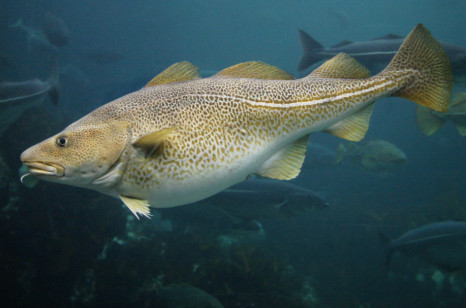 The species of zooplankton that is one of the preferred foods of larval cod simply can’t take the heat,,,,For decades, the prevailing wisdom in fishery management was that fish stocks such as cod, haddock and flounder would reproduce in numbers sufficient to rebuild decimated populations if fishermen could simply be kept from catching too many.,,,, scientists noticed that plankton surveys showed a decline in some key zooplankton species in areas where the water had warmed. That matched up with portions of the ocean where cod, too, were not doing very well. continued@capecodonline
The species of zooplankton that is one of the preferred foods of larval cod simply can’t take the heat,,,,For decades, the prevailing wisdom in fishery management was that fish stocks such as cod, haddock and flounder would reproduce in numbers sufficient to rebuild decimated populations if fishermen could simply be kept from catching too many.,,,, scientists noticed that plankton surveys showed a decline in some key zooplankton species in areas where the water had warmed. That matched up with portions of the ocean where cod, too, were not doing very well. continued@capecodonline
Changing Sea Surface Temperatures and Water Circulation Patterns Affecting Food Supply for Young Atlantic Cod
NOAA researcher Kevin Friedland and colleagues looked at the distribution and abundance of important zooplankton species, sea surface water temperatures, and cod abundance. continued@NEFSC 13:11
Asian carp could threaten La. fishery
 A Louisiana chef is teaming up with wildlife officials to target a big fish that could cause even bigger problems in the state’s productive fishing grounds. These fish eat voraciously and reproduce rapidly. One fish reproduces three to four times a year, releasing between 100,000 to 3 million eggs each spawning, Parola said. They have no major predators and can eat more than 20 percent of their body weight in algae and plankton a day. Asian carp can weigh up to 100 pounds. With their large size and hunger for plankton, they could pose a threat to native species. continued
A Louisiana chef is teaming up with wildlife officials to target a big fish that could cause even bigger problems in the state’s productive fishing grounds. These fish eat voraciously and reproduce rapidly. One fish reproduces three to four times a year, releasing between 100,000 to 3 million eggs each spawning, Parola said. They have no major predators and can eat more than 20 percent of their body weight in algae and plankton a day. Asian carp can weigh up to 100 pounds. With their large size and hunger for plankton, they could pose a threat to native species. continued
European fisheries flip with long-term ocean cycle – Atlantic Multidecadal Oscillation
![]() A sudden switch from herring to sardines in the English Channel in the 1930s was due to a long-term ocean cycle called the Atlantic Multidecadal Oscillation (AMO), an international study shows. This is the first evidence linking the AMO to trends in important European fisheries. The study, funded by the governments of the UK, Canada, Norway, the USA and Germany, compared data on sea-surface temperatures with measurements of plankton concentrations continued
A sudden switch from herring to sardines in the English Channel in the 1930s was due to a long-term ocean cycle called the Atlantic Multidecadal Oscillation (AMO), an international study shows. This is the first evidence linking the AMO to trends in important European fisheries. The study, funded by the governments of the UK, Canada, Norway, the USA and Germany, compared data on sea-surface temperatures with measurements of plankton concentrations continued






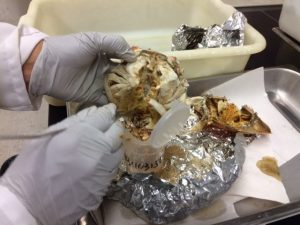
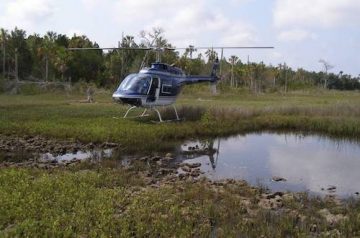
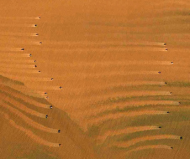
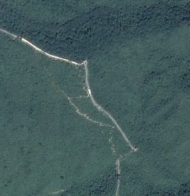

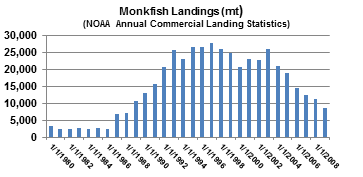
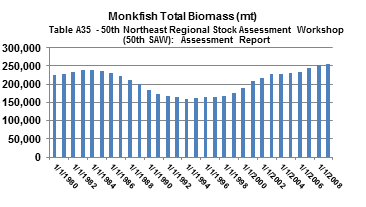

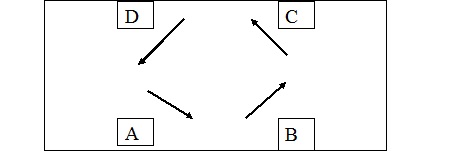
 Many scientists are increasingly acknowledging that we can no longer afford to dismiss some gee-whiz technological fixes outright. We need to understand what, if any of it, could help. In 2012, a controversial California entrepreneur motored off the coast of British Columbia and dumped 100 metric tons of iron dust into the Pacific Ocean, hoping to spark a 4,000-square-mile plankton bloom.
Many scientists are increasingly acknowledging that we can no longer afford to dismiss some gee-whiz technological fixes outright. We need to understand what, if any of it, could help. In 2012, a controversial California entrepreneur motored off the coast of British Columbia and dumped 100 metric tons of iron dust into the Pacific Ocean, hoping to spark a 4,000-square-mile plankton bloom. 

























